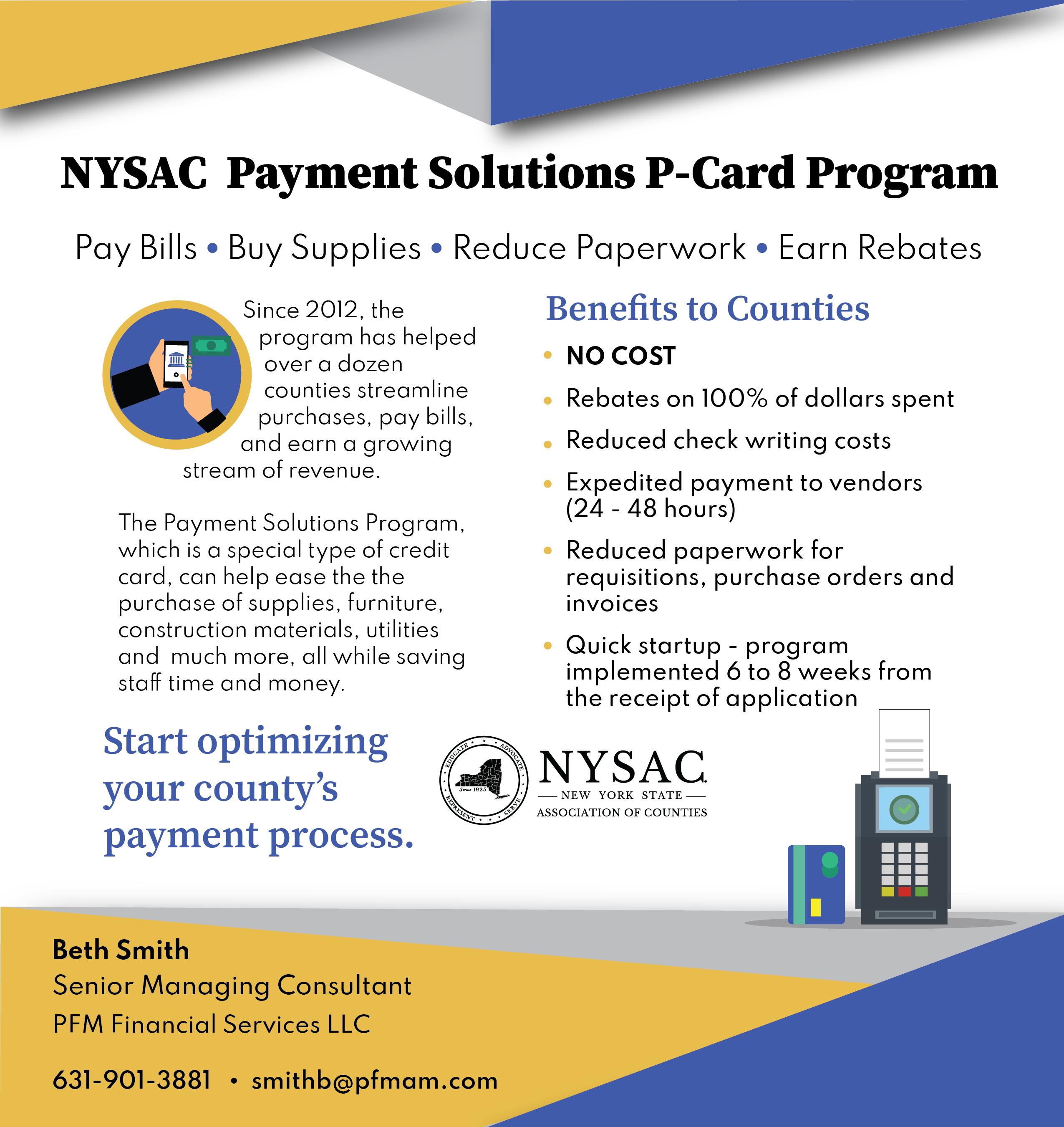

NYSAC News
Evolving with you

PERMA is the trusted source to more than 800 public entities across New York State for not only strategic Workers’ Compensation coverage plans but also proactive and comprehensive workplace solutions.
Let PERMAbe your source for: better safety and risk management personalized service support solutions for today’s workplace needs coverage options including large deductible plans, TPA services and full first dollar coverage.
Added Value = Cost Savings
Membership in PERMA includes access to key training programs, service and benefits that elsewhere are additional expenses.
PERMA and
Partners Since 2011
Member Spotlight: S TE UBEN COUNTY
“We were with a third party administrator that didn’t provide much support or solutions and were actively looking to change. PERMA understands the pressures of local government and was creative in finding a solution that worked for us as a self-insured pool.”
– Jack Wheeler, County Manager & PERMA Board Member
PERMA’s diligent review of Steuben County’s prior Workers’ Compensation claims resulted in recovering for the county $400,000 in overpayments. They have been a PERMA member now for more than 10 years.


Registered Municipal Advisors Serving New York State Municipalities Since 1967
Bond & Note Issues Refunding Bond Issues Lease Financings EFC Short and Long Term Financings Energy Performance Contract Financing Credit Rating Assistance Accounting & Bookkeeping Services Cash Flow Borrowings Continuing Secondary Market Disclosure
CORPORATE HEA DQUA RTERS
250 South Clinton Street, Suite 502, Syracuse, NY 13202 Phone (315) 752-0051
Mark Vislosky, CIPMA, Municipal Advisor
Christine Crowley, CIPMA, President/Municipal Advisor
Benjamin Maslona, CIPMA, Executive Vice President/Municipal Advisor
CAPITAL REGION
Jeanine Rodgers Caruso, CIPMA MBA, Municipal Advisor
Andrew Watkins, CIPMA, Municipal Advisor 63 Putnam Street, Suite 202 Saratoga Springs, New York 12866 (518) 541-3861
HUDSON VALLEY REGION
Beth Ferguson
Vice President/Municipal Advisor 827 Rte 82, Suite 10231 Hopewell Junction, New York 12533 (845) 447-2214
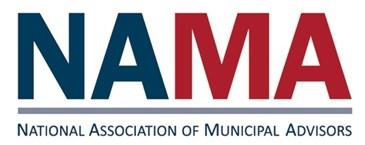
WESTERN REGION
Kelly Lathan, Financial Analyst 5 North Avenue LeRoy, New York 14482 (585) 502-5010
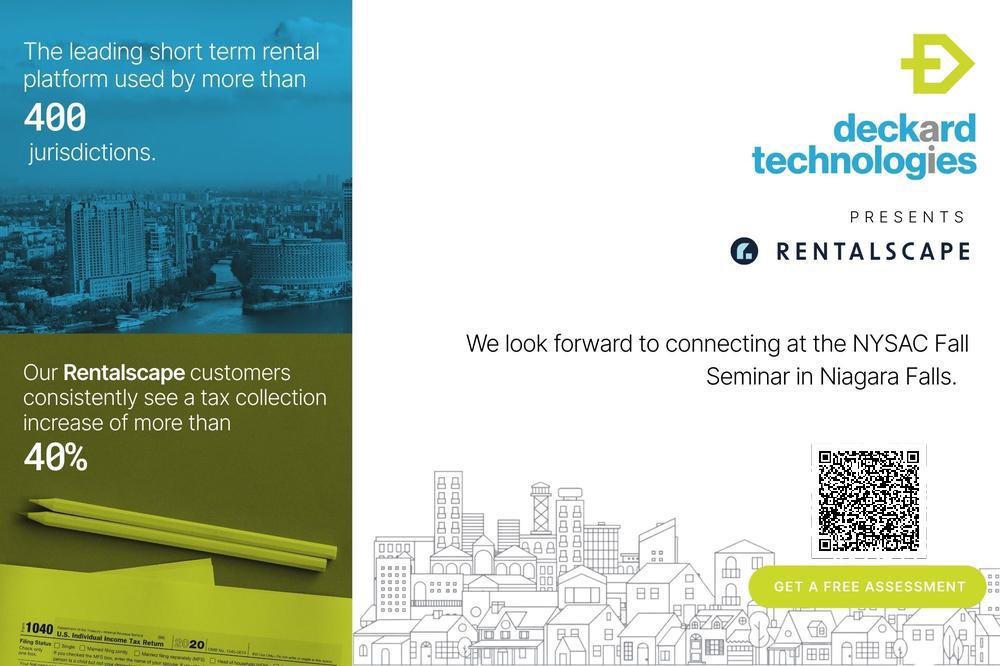
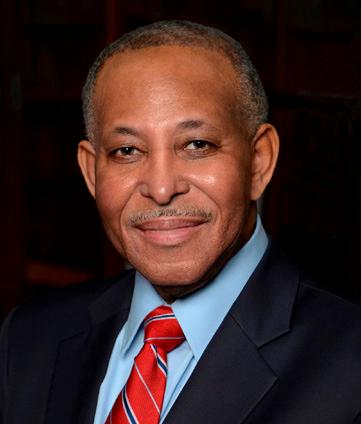
NYSAC OFFICERS
Hon. Benjamin Boykin II Westchester County President
Hon. Philip R. Church Oswego County President-Elect
Dr. Kevin Watkins
Cattaraugus County First Vice President
Hon. Margaret M. Kennedy Otsego County
Second Vice President
Hon. Daniel P. McCoy Albany County Immediate Past President
BOARD MEMBERS
Hon. Luis A. Alvarez, Sullivan County
Hon. Bruce Blakeman, Nassau County
Ms. Ruth A. Doyle, St. Lawrence County
Mr. Jonas Neri
New York City Office of the Mayor
Hon. Beth A. Hunt, Hamilton County
Hon. J. Ryan McMahon II Onondaga County
Hon. Steven M. Neuhaus, Orange County
Hon. Shawna Black, Tompkins County
Hon. Paul M. Wendel Jr. Chautauqua County
PARLIAMENTARIANS
Hon. Herman Geist, Esq., Westchester County
Hon. A. Douglas Berwanger, Wyoming County
President's Page Working Together to Embrace Innovation and Local Leadership
As we continue to celebrate NYSAC’s 100 years of service to our member counties, we find ourselves in an era marked by federal uncertainty and sweeping changes to many of our core institutions.
County government leadership has never been more crucial. As elected and appointed county officials in the great state of New York, we find ourselves where the rubber meets the road for many of these challenges— understanding how these pending changes will impact us locally so that we best lead our communities through these turbulent times.
While the federal landscape may shift unpredictably, our local governments remain the bedrock of stability, resilience, and innovation.
We are closest to the people, understanding their needs and serving as their direct representatives. In times of change, our unwavering commitment to public service shines as the beacon of hope and reliability.
Funding cuts may test our resources, but they will not diminish our resolve. Through continued prudent fiscal management and collaborative efforts, we transform adversity into opportunity, finding new ways to deliver essential services and support our communities.
We must continue to champion initiatives that foster economic growth, enhance infrastructure, and improve the quality of life for every resident.
As we navigate the evolving landscape of governance, embracing innovation becomes paramount. The digital age presents us with tools and technologies
that can revolutionize the way we work in our counties, making operations more efficient and transparent.
We must responsibly harness these advancements to ensure our processes remain robust and responsive.
Moreover, the new way of managing our democracy calls for heightened engagement—from our citizens and our staff, involving them in our decisionmaking processes, fostering a sense of ownership and participation. By cultivating a culture of collaboration, we not only strengthen our bond with the electorate but also pave the way for more informed and impactful governance.
As the President of the New York State Association of Counties, I am optimistic about our collective future. Together, we possess the fortitude, wisdom, and creativity to surmount any challenge. Let us reaffirm our dedication to serving our communities with integrity and vision.
In unity and determination, we shall prevail and thrive through the next 100 years, steering our counties towards a prosperous and innovative future.
The path ahead may be fraught with uncertainties, but with dedication to service and a commitment to excellence, we will navigate it with confidence and grace.

Hon. Benjamin Boykin II NYSAC President

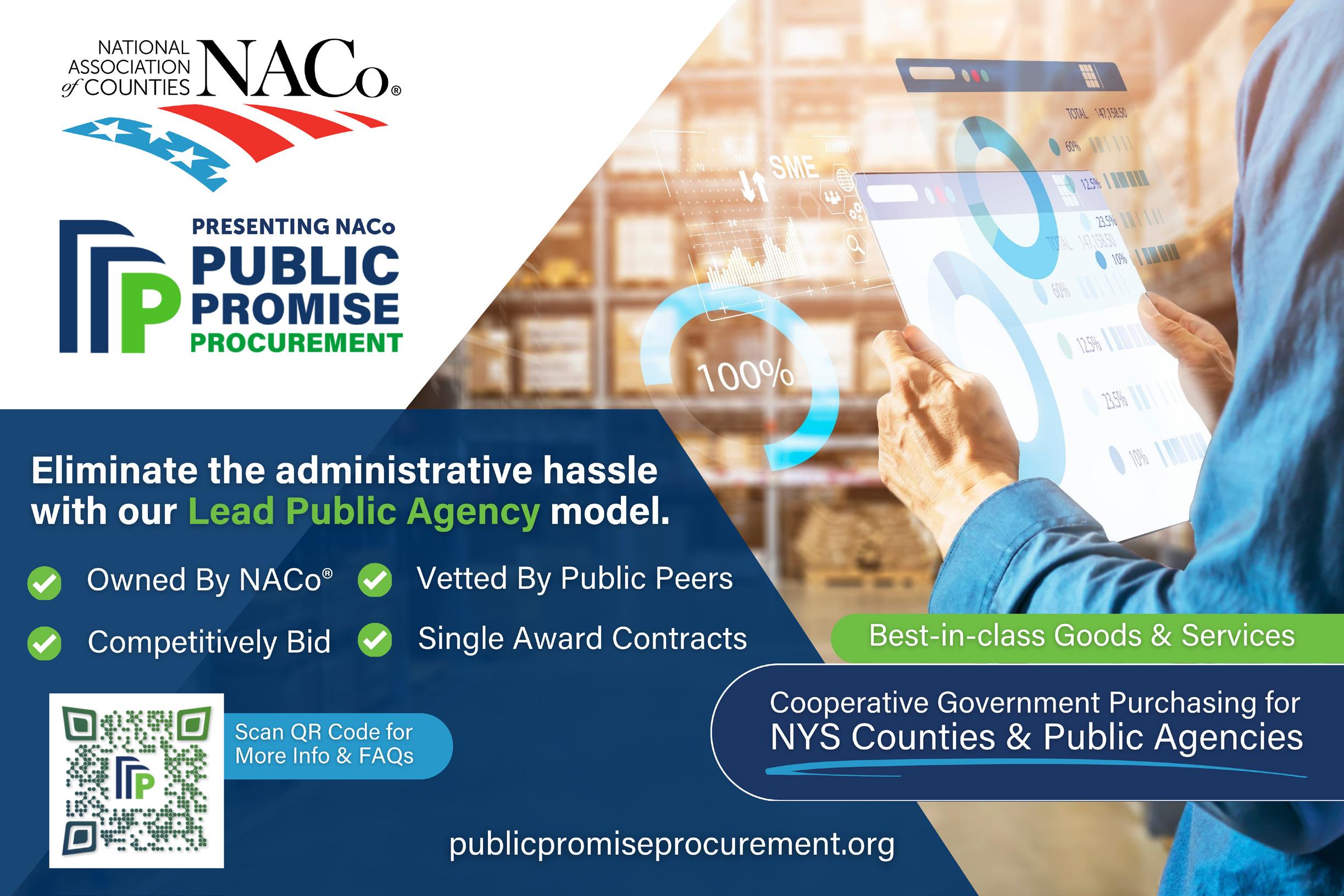

NYSAC STAFF
(partial listing)
Stephen J. Acquario, Esq. Executive Director
Blake Bacas NYSAC Intern
Karen Catalfamo Office/Financial Manager
Patrick Cummings, Esq. Counsel
Patricia Gettings Assistant to the Director
Ryan Gregoire Legislative Director
Mark LaVigne Deputy Director
Dave Lucas Director of Finance & Intergovernmental Affairs
Juanita Munguia Business Development Manager
Tom Oldfather Communications Manager
Kate Pierce-Nimz Multimedia Specialist
Alexandra Regan Legislative/Policy Coordinator
Maya Rotman NYSAC Intern
Jeanette Stanziano Director of Education & Training
Chancey Young Member Information Manager
Fostering Excellence
in County Government

Director's Note
NYSAC's Commitment to Counties and Communities
NYSAC was established by a group of committed local public servants to unite their voices, organize collective training opportunities, and advocate for the needs of their residents. Over the years, NYSAC has garnered respect and recognition for its persistent efforts to influence state and federal policy and drive positive change. As we reflect on our centennial, it is essential to acknowledge the significant milestones and collective achievements that have shaped our history.
Our advocacy efforts have always been at the core of NYSAC's mission. Each year, as the state legislative session unfolds, NYSAC represents the interests of its members, and works to ensure that county governments can maintain their fiscal stability and efficiently serve their residents.
During this past legislative session, NYSAC has been instrumental in advancing critical issues such as funding for infrastructure projects, public health initiatives, and environmental sustainability. Our advocacy extends beyond the halls of the Capitol; we engage with legislators, stakeholders, and community leaders to build consensus and drive meaningful policy changes.
Amidst our 100-year anniversary celebrations, we remain acutely aware of the ongoing threats posed by federal Medicaid cuts. These proposed reductions have the potential to severely impact the state of New York and our counties, potentially compromising our most vulnerable populations and the health care providers that serve them.
Our strategy includes comprehensive research, targeted advocacy efforts, and public awareness campaigns. We collaborate with national organizations and leverage our collective expertise to present a compelling case to federal decision-makers. We aim to mitigate the adverse effects of Medicaid cuts and preserve the quality of care that our communities deserve.
The challenges we face are evolving, but so too are our strategies and solutions. We are dedicated to adapting and innovating to meet the needs of our counties and ensure that they thrive in an ever-changing landscape.
The future of NYSAC is bright, rooted in a rich legacy of service and propelled by a vision of progress and unity. We will continue to champion the interests of our members, advocating for policies that foster economic growth, public service, and fiscal stewardship.
In celebrating our 100-year anniversary, we honor the past, embrace the present, and look forward to the future with optimism and determination.
As Executive Director, I am immensely proud of the work we have done and the work that lies ahead. Thank you for your unwavering support and dedication to NYSAC. Here’s to another century of advocacy and service.

Stephen J. Acquario, Esq.
NYSAC Executive Director
NYSAC News

NYSAC News
NYSAC’s mission is to foster excellence in county government and unite the voice of New York’s county leaders.
President
Hon. Benjamin Boykin II
Publisher Stephen J. Acquario
Managing Editor Mark F. LaVigne
Editor Tom Oldfather
Designer Kate Pierce-Nimz
Advertising Staff Juanita Munguia
Advertise with NYSAC
Contact NYSAC Business Development Manager Juanita Munguia at 518-465-1473 or jmunguia@nysac.org
Published 3 times a year by the New York State Association of Counties (NYSAC), the NYSAC News is the official publication of NYSAC, a non-profit, municipal association serving the 57 counties of New York State and the City of New York with its five boroughs for 100 years. NYSAC’s mission is to foster excellence in county government and unite the voice of New York’s county leaders.
NYSAC NEWS MAGAZINE
515 Broadway, Suite 402, Albany, New York 12207
Phone • (518) 465-1473
Fax • (518) 465-0506
NEW
STATE ASSOCIATION OF COUNTIES
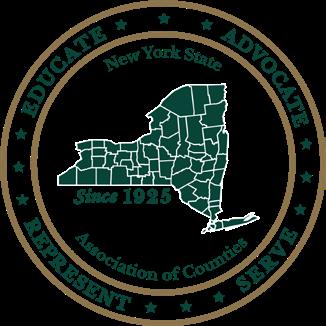
SFY 2026 Enacted Budget What County Leaders Need to Know Now

TBy Ryan Gregoire, NYSAC Legislative Director
he State Fiscal Year (SFY) 2026 Enacted Budget arrived more than a month behind schedule—but not without significance for New York’s 57 counties and the City of New York. After 12 emergency budget extenders, the final agreement between the executive and legislature delivers increased investments, new mandates, and fiscal leeway with long-term implications for county governance.
Here's what local leaders need to pay attention to:
1. Medicaid Cost Cap Preserved—And It Matters More Than Ever
In a major win for counties, the state will maintain the local Medicaid cap first enacted in 2006 and fully phased in by 2015. This means that county contributions to Medicaid will remain flat, saving local governments an estimated $8.3 billion statewide in SFY 2026—$3.7 billion outside NYC and $4.6 billion within.
This cap remains foundational to local fiscal stability. Without it, many counties would face service cuts or significant tax increases. Still, officials should watch for potential shifts in FMAP funding at the federal level, which could force a reevaluation of the state’s obligations and commitments.
2. Property Tax Implications from Housing and Revitalization Policies
The budget expands funding for housing and economic revitalization, including:
• $200 million for Downtown Revitalization and NY Forward
• A new prohibition on institutional investors buying homes within 75 days of listing
• A requirement that municipalities seeking certain grants be certified as Pro-Housing Communities
While these efforts aim to expand housing supply and boost the tax base, they also carry land use, zoning, and infrastructure implications that counties may need to coordinate across jurisdictions.
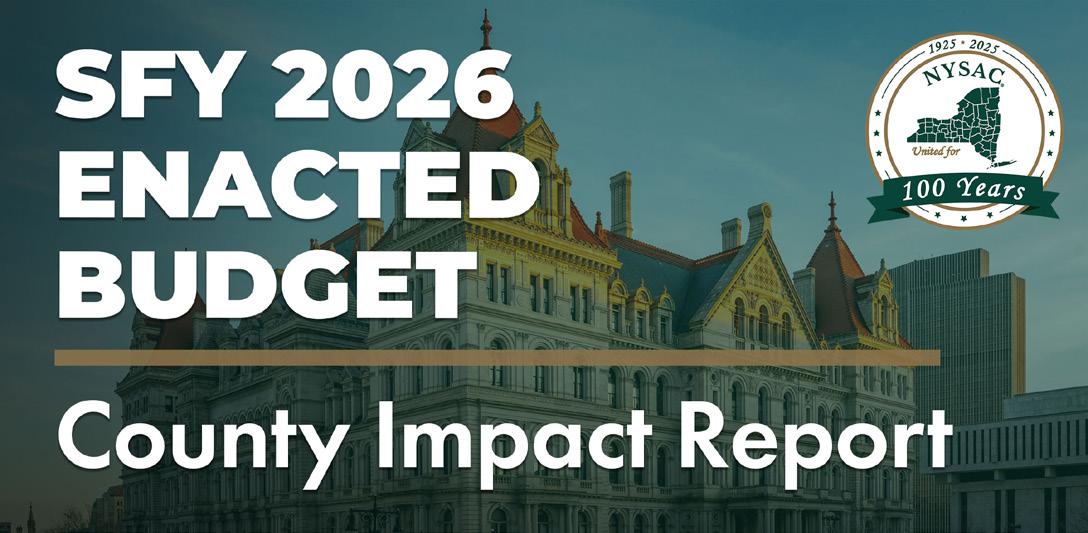
3. Health & Human Services: Big Money, But Targeted
Counties will see continued investment in health and social services, including:
• $230 million for core public health funding (Article 6 reimbursement)
• $3.7 billion in federal funds for Medicaid stabilization through a new MCO provider tax
• $340 million to launch a Universal Free School Meals program statewide
• $68 million to meet unmet needs in aging services
However, our county social services are forced to bear more costs associated with the daycare block grant as well as providing aid to safety net individuals and families. The budget did not allocate a greater share of funding for counties to comply with either program—safety net or daycare assistance.
4. Infrastructure and Transportation
CHIPS received a $50 million bump, totaling $648 million. Combined with $150 million for PAVE NY, $200 million for BRIDGE NY, and $100 million for pothole recovery, the budget maintains support for local transportation projects.
No new transportation appropriations were added since the executive proposal in January, and inflation may erode buying power. Counties should act early to lock in bids and project timelines before costs escalate.
5. Public Safety and Legal Services: Continued Commitment, New Obligations
The budget continues major investments in legal defense and criminal justice reform:
• $481.9 million for Indigent Legal Services (ILS), including full funding for Hurrell-Harring reforms
• $80 million for prosecution and defense resources
• $250 million for Raise the Age implementation
Additionally, counties will be expected to post opioid settlement spending data publicly, a new transparency requirement under the budget.
6. Education and Workforce: A Lifeline for Adult Learners
The budget included the New York Opportunity Promise Scholarship, which covers tuition and expenses for adults aged 25–55 pursuing associate degrees in high-demand fields like cybersecurity, nursing, and AI.
Counties can play a key role in helping residents access this opportunity—especially in partnership with community colleges and local workforce boards.
What’s Next?
The old saying in Albany used to be that the budget is decided by “three men in a room.” Thankfully, progress has necessitated that it evolve to “two women and a man in a room.” But this year, those three were joined by an elephant in the room in the form of looming federal budget cuts – specifically to Medicaid reimbursements.
With the federal budget months away from completion, legislators opted to address this unpredictability by including language granting State Budget Director authority to withhold some or all appropriations with the exception of public assistance payments, debt service, or any reductions that would violate federal law or court orders or judgements.
Only time will tell how New York and its counties will be impacted by federal action, but NYSAC will continue to vigorously monitor and report to our members about the ongoing federal negotiations.
Roof Management, Simplified.
Introducing the Asset Management Approach







2025 NYSAC
Photo Contest Winners
This year’s theme of Beyond 100: The Future of New York's Counties was chosen in celebration of NYSAC's centennial year. We are looking ahead to the next 100 years of county government service.
Congratulations to the talented photographers who participated in our annual contest!
Be sure to look for these photos in the 2026 NYSAC Counties in Focus Calendar.
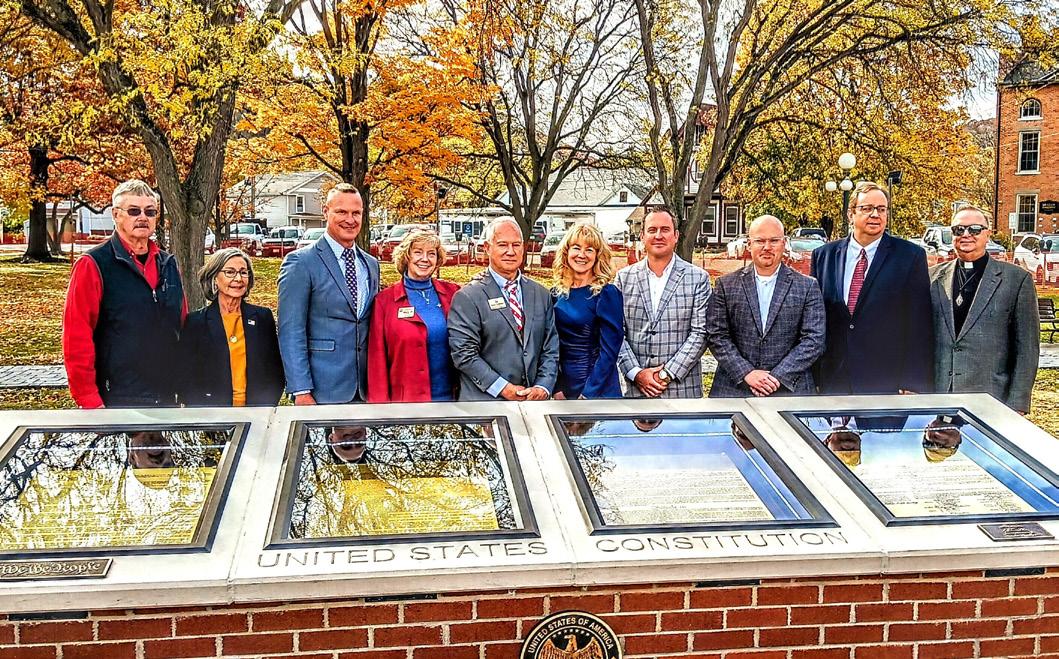



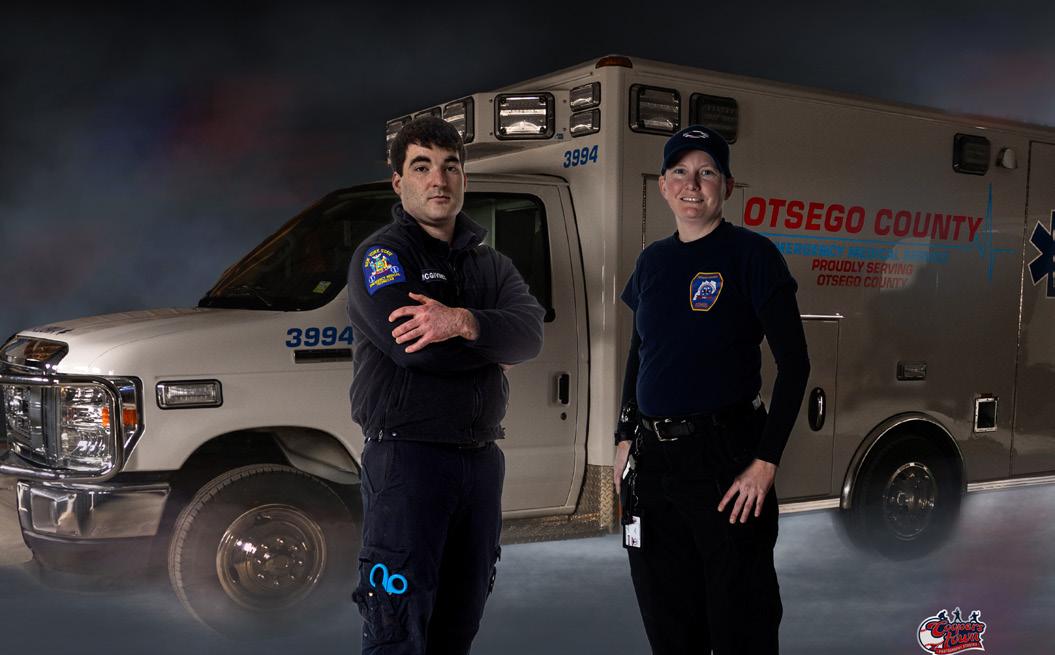
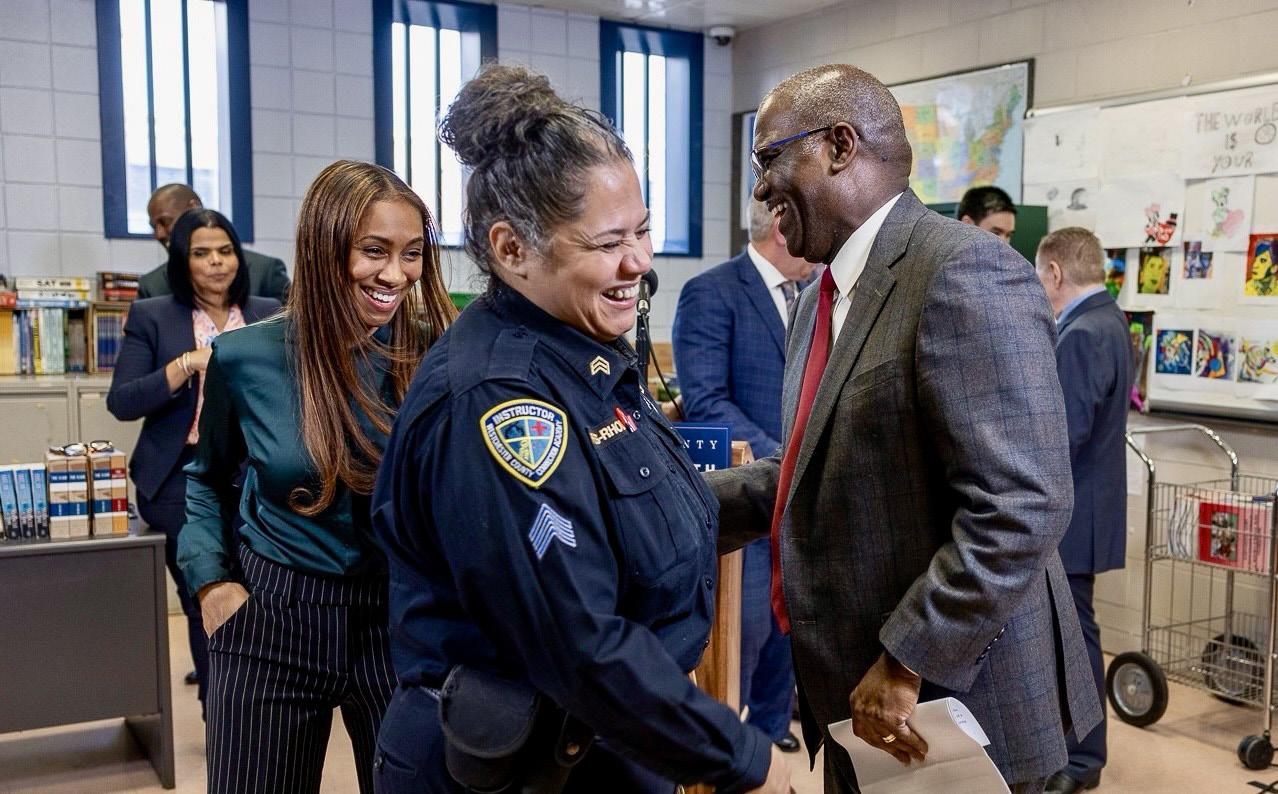
Herkimer County
Steuben County
Otsego County
Oneida County
Westchester County
Erie Canal Trail Parking
U.S. Charter of Freedom in Pulteney Park
County EMS Ambulance Service
Paul Revere Sign
Free County Jail Phone Access Program
Photographer: Kevin Hoehn
Photographer: Eddie VanStine
Photographer: Dan Wilber
Photographer: Kevin Hoehn
Photographer: Alex Acaro

The Dangers of PFAS
In Fertilizer Made
from Sewage Sludge
I n J a n u a r y 2 0 2 5 a s r e p o r t e d i n T h e N e w Y o r k T i m e s
t h e E n v i r o n m e n t a l P r o t e c t i o n A g e n c y ( E P A ) i s s u e d a
w a r n i n g a b o u t t h e p r e s e n c e o f " f o r e v e r c h e m i c a l s , "
s p e c i f i c a l l y p e r - a n d p o l y f l u o r o a l k y l s u b s t a n c e s ( P F A S ) i n
s e w a g e s l u d g e u s e d a s f e r t i l i z e r
' F o r e v e r C h e m i c a l s ' A r e A l s o E v e r y w h e r e
T h e s e c h e m i c a l s a r e k n o w n f o r t h e i r p e r s i s t e n c e i n t h e
e n v i r o n m e n t a n d t h e i r p o t e n t i a l t o c a u s e s i g n i f i c a n t
h e a l t h r i s k s P F A S a r e w i d e l y u s e d i n e v e r y d a y i t e m s s u c h
a s n o n s t i c k c o o k w a r e a n d s t a i n - r e s i s t a n t c a r p e t s T h e y
d o n o t b r e a k d o w n e a s i l y a n d c a n a c c u m u l a t e i n t h e
e n v i r o n m e n t a n d t h e h u m a n b o d y o v e r t i m e
P F A S P o s e W i d e s p r e a d H e a l t h T h r e a t
P F A S e x p o s u r e h a s b e e n l i n k e d t o a r a n g e o f h e a l t h i s s u e s , i n c l u d i n g :
I n c r e a s e d r i s k o f c a n c e r
L i v e r a n d i m m u n e s y s t e m e f f e c t s
H i g h c h o l e s t e r o l a n d h i g h b l o o d p r e s s u r e
T h y r o i d d i s o r d e r s
P r e g n a n c y - i n d u c e d h y p e r t e n s i o n a n d p r e e c l a m p s i a
T o x i c T r u t h s : T h e H u m a n a n d E n v i r o n m e n t a l
I m p a c t s
T h e E P A s s t u d y i n d i c a t e s t h a t t h e l e v e l s o f P F A S i n
s e w a g e s l u d g e c a n s o m e t i m e s e x c e e d s a f e t y t h r e s h o l d s
b y s e v e r a l o r d e r s o f m a g n i t u d e , p o s i n g s i g n i f i c a n t r i s k s t o
h u m a n h e a l t h W h e n c o n t a m i n a t e d s l u d g e i s u s e d a s
f e r t i l i z e r , i t c a n c o n t a m i n a t e s o i l , g r o u n d w a t e r , s u r f a c e
w a t e r , c r o p s , a n d l i v e s t o c k , l e a d i n g t o f u r t h e r e x p o s u r e
t h r o u g h t h e f o o d c h a i n
T h i s c o n t a m i n a t i o n c a n p e r s i s t f o r y e a r s o r e v e n d e c a d e s ,
c o n t i n u i n g t o p o s e r i s k s l o n g a f t e r t h e i n i t i a l a p p l i c a t i o n
T h e E P A h a s e n c o u r a g e d t h e u s e o f s l u d g e a s f e r t i l i z e r
d u e t o i t s n u t r i e n t c o n t e n t a n d e n v i r o n m e n t a l b e n e f i t s , b u t
t h e n e w f i n d i n g s h i g h l i g h t t h e n e e d f o r s t r i c t e r r e g u l a t i o n s
t o p r o t e c t p u b l i c h e a l t h

“ A S t a t e o f D i s a s t e r ” i n J o h n s o n C o u n t y , T X
J o h n s o n C o u n t y , T e x a s c o m m i s s i o n e r s d e c l a r e d a s t a t e o f e m e r g e n c y e a r l i e r t h i s y e a r w h e n d a n g e r o u s l e v e l s o f P F A S w e r e f o u n d i n t h e s o i l w a t e r a n d a n i m a l t i s s u e t h r o u g h o u t a f a r m i n t h e c o u n t y
I n J a n u a r y 2 0 2 5 , N a p o l i S h k o l n i k f i l e d a c l a s s a c t i o n l a w s u i t a n d a n a p p l i c a t i o n f o r a m a n d a t o r y i n j u n c t i o n o n b e h a l f o f T e x a s f a r m e r s
a g a i n s t S y n a g r o T e c h n o l o g i e s , I n c , S y n a g r o o f T e x a s - C D R , I n c , a n d
R e n d a E n v i r o n m e n t a l , I n c T h e l a w s u i t a l l e g e s t h a t t h e p l a i n t i f f s f a r m s
w e r e c o n t a m i n a t e d b y t o x i c c h e m i c a l s p r e s e n t i n b i o s o l i d s - b a s e d
f e r t i l i z e r s p r o d u c e d a n d m a r k e t e d b y t h e d e f e n d a n t s
S y n a g r o c o n t r a c t s w i t h o v e r 1 , 0 0 0 m u n i c i p a l w a s t e w a t e r f a c i l i t i e s a c r o s s N o r t h A m e r i c a , i n c l u d i n g t h e C i t y o f F o r t W o r t h , T e x a s , t o
p r o d u c e b i o s o l i d s - b a s e d f e r t i l i z e r s ( T h e N e w Y o r k T i m e s r e p o r t e d o n
t h i s l a w s u i t i n F e b r u a r y 2 0 2 5 )
T h e f e r t i l i z e r s , m a d e f r o m t r e a t e d s e w a g e s l u d g e , a l l e g e d l y c o n t a i n
P F A S a n d o t h e r p e r s i s t e n t p o l l u t a n t s t h a t a r e n o t r e m o v e d d u r i n g t h e
w a s t e w a t e r t r e a t m e n t p r o c e s s
D a m a g i n g L e g a c y : S o u t h C a r o l i n a F a r m l a n d C o n t a m i n -
- a te d by Tex t i l e M i l l
A c o m m u n i t y i n S o u t h C a r o l i n a i s a l s o g r a p p l i n g w i t h P FA S
c o n t a m i n a t i o n o n r o u g h l y 1 0 , 0 0 0 a c r e s o f f a r m l a n d s u r r o u n d i n g t h e
fo r m e r G a l e y & L o r d t e x t i l e m i l l , a s re p o r te d b y Th e N e w Yo r k T i m e s
l a s t m o n t h
R e c e n t t e s t i n g b y s c i e n t i s t s r e v e a l e d a l a r m i n g P FA S c o n c e n t r a t i o n s i n
a t l e a s t o n e f i e l d , m e a s u r i n g u p t o 1 , 5 0 0 t i m e s h i g h e r t h a n t h e
E n v i r o n m e n t a l P r o t e c t i o n A g e n c y ’ s ( E PA ) c u r r e n t s t a n d a r d f o r s a f e
d r i n k i n g w a t e r Th e s e f i n d i n g s h a v e s p a r ke d a p u s h f o r t h e s i t e t o b e
d e s i g n a t e d a s a f e d e r a l S u p e r f u n d s i t e a c l a s s i f i c a t i o n t h a t w o u l d m a ke t h e f e d e r a l g o v e r n m en t r e s p o n s i b l e f o r c o o r d i n a t i n g c l e a n u p
e f f o r t s
Th e c o n t a m i n a t i o n t r a c e s b a c k d e c a d e s t o w h e n t h e t e x t i l e m i l l
r o u t i n e l y d i s c h a r g e d w a t e r i n t o o n - s i t e l a g o o n s A f t e r t r e a t m e n t , t h e
r e m a i n i n g s l u d g e w a s d i s t r i b u t e d - f r e e o f c h a r g e - t o l o c a l f a r m e r s a s
f e r t i l i ze r A t t h e t i m e , n e i t h e r t h e f a r m e r s n o r t h e b r o a d e r p u b l i c w e r e
a w a r e t h a t t h e s l u d g e c o n t a i n e d P FA S
E v e n t o d a y c r o p s c o n t i n u e t o b e g r o w n o n s o m e o f t h e p o t e n t i a l l y
c o n t a m i n a t e d f i e l d s , r a i s i n g c o n c e r n s a b o u t t h e s a f e t y o f l o c a l f o o d
s u p p l i e s
Th e n o w - d e f u n c t G a l e y & L o r d m i l l , w h o s e o p e r a t o r s h a v e d e c l a r e d
b a n k r u p t c y , m a y h a v e l e f t b e h i n d n o t o n l y a s h u t t e r e d f a c i l i t y b u t a l s o a
t o x i c f o o t p r i n t w i t h l o n g - l a s t i n g i m p a c t s o n a g r i c u l t u r e , h u m a n h e a l t h , a n d t h e e n v i r o n m e n t
H o l d i n g P o l l u t e r s A c c o u n t a b l e
T h i s e d u c a t i o n a l c o n t e n t i s p r o v i d e d b y N a p o l i S h k o l n i k , w h o s e
e x p e r t i s e i n e n v i r o n m e n t a l l a w a n d c o m m i t m e n t t o p u b l i c h e a l t h a n d
s a f e t y p l a y s a c r u c i a l r o l e i n a d d r e s s i n g t h e w i d e s p r e a d i s s u e o f P F A S
c o n t a m i n a t i o n t h r o u g h t h e i r r e p r e s e n t a t i o n a n d a d v o c a c y f o r s t r i c t e r
r e g u l a t i o n s t o p r o t e c t b o t h t h e e n v i r o n m e n t a n d h u m a n h e a l t h
Navigating Uncertainty in a Shifting Economic Landscape
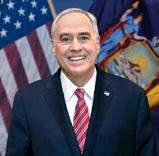
IBy Thomas DiNapoli, New York State Comptroller
n May, I had the pleasure of speaking at NYSAC’s 59th Annual Finance School, an event that my office proudly cosponsors each year. But this year is different from others. Local leaders are facing two stark challenges: deep uncertainty regarding the economy and potentially devastating cuts from the federal government. There has never been a more important time to reaffirm our shared commitment to sound fiscal and operational management.
Unfortunately, actions taken in Washington may cut health care, food assistance, infrastructure and other critical programs, or require greater cost-sharing by state governments. If enacted, federal changes currently under consideration by Congress could affect mandatory programs, like SNAP and Medicaid, that millions of New Yorkers rely on. This would impact eligibility for these critical services, how the state disburses funding for them and potentially how much local governments are expected to contribute toward their provision or administration.
We’ve already begun to see the impact of federal actions.
Last month, Governor Hochul announced that the federal government has already cut $1.3 billion in financial support to New York. Notable cuts our office has tracked include $367 million in cuts to federally funded health programs, addiction services, and mental health supports. The Administration also announced it would claw back approximately $100 million for education provided during the pandemic.
President Trump’s Executive Order freezing payments from the Infrastructure Investment and Jobs Act and the Inflation Reduction Act (IRA) jeopardizes $13.6 billion in grants and $2 billion in tax credits. Congress has also proposed eliminating IRA programs and credits. More than 189,000 New Yorkers have claimed $374 million worth of benefits from two major IRA tax credits that are at risk of being repealed.
If enacted, the types of changes under consideration would significantly alter the fiscal relationship between the federal government and states, particularly for health and social service programs. The results will pose a challenge for New York, and we will need to make choices about how to amend service provision, to reduce eligibility or scope, or to increase state—and potentially local—support for them.
State and local governments will have to navigate these changes as they also contend with a shifting economic landscape. While the state has regained the jobs lost during the pandemic, some regions of the state have not had a full recovery. Market volatility has increased, and business and consumer confidence have decreased. The imposition of tariffs threatens to raise the price of goods for consumers and businesses, which may slow economic growth and affect future revenues.
As businesses try to navigate these uncertain times, the recently Enacted State Budget took a significant action: designating $8 billion for the repayment of the unemployment insurance trust fund loan from the federal government. This will provide much needed relief to small businesses that have been shouldering this major cost burden.
The funding for this measure will come from funds set aside to deal with uncertainties. In addition to these funds, the state retains statutory rainy-day funds that can only be used in an economic downturn or emergency. Right now, New York has nearly $8.8 billion in the statutory rainy-day reserves, which is an historic high. But short-term use of reserve funds won’t make up for potential restructuring of the federal-state relationship for key programs, especially in health and social services.
If we want to protect ourselves against federal cuts, we’ll need to develop solutions that promote long-term fiscal stability. One tool that my office offers local governments is our Fiscal Stress Monitoring System (FSMS), which uses annual financial reports to identify early warning signs of financial issues.
Of course, we continue to assist local governments through our Local Government Leadership Institute and the Academy for Local Officials—along with our audits, research reports, and technical assistance in everything from accounting to procurement.
Given the uncertainty we face, we should double down on our collaborations—because we will need every tool in our toolkit to address our current fiscal reality. Together, we can become more resilient and weather the volatility that may lie ahead.
As always, I look forward to my office’s continued partnership with NYSAC and New York’s counties as we work to create a strong future for our communities.
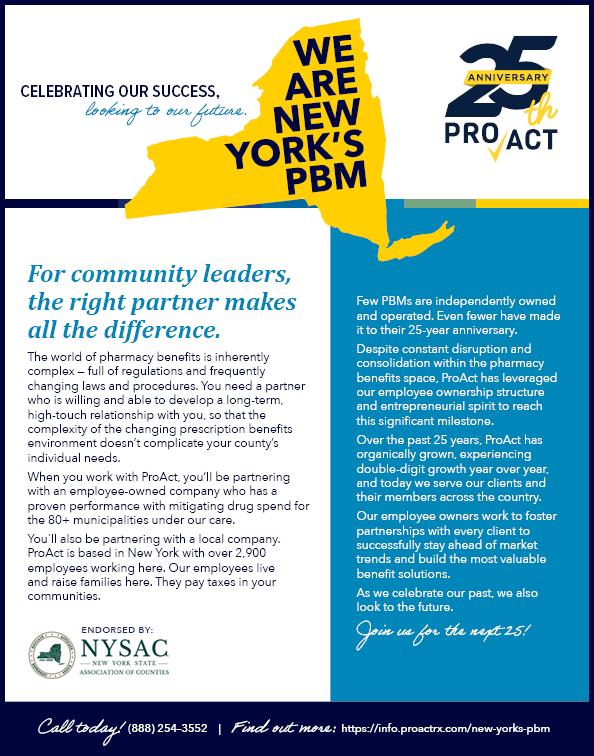
Answering the Call The Evolution and Future of NY’s 9-1-1 System

WBy Maya Rotman, NYSAC Intern
hen someone dials 9-1-1, they expect help to arrive— fast. Behind that expectation lies a complex web of infrastructure, technology, and funding, all of which quietly play their role behind the scenes. In New York State, the 9-1-1 system has undergone significant changes since its inception in 1968, evolving alongside new technologies and shifting administrative models.
The concept of 9-1-1 as a universal emergency number was simple in theory, yet many unexpected complications arose when put into practice. Initially, the New York State Police were responsible for emergency dispatch which included directing responders to street addresses reported by landline callers. As communities grew and diversified, control over emergency response services gradually devolved to local governments, many of which operated their own Public Safety Answering Points (PSAPs).
With the spread of multiple PSAPs within single counties came severe inefficiencies. Over the last decade, a significant shift has occurred: counties across the state have consolidated their PSAPs. Currently, most New Yorkers have their emergency calls routed through a centralized county-based PSAP that coordinates response across multiple agencies, from sheriff’s deputies to EMS to State Troopers and more. This centralization has not only streamlined operations but also allowed emergency systems to better adapt to the growing complexity of 9-1-1 calls.
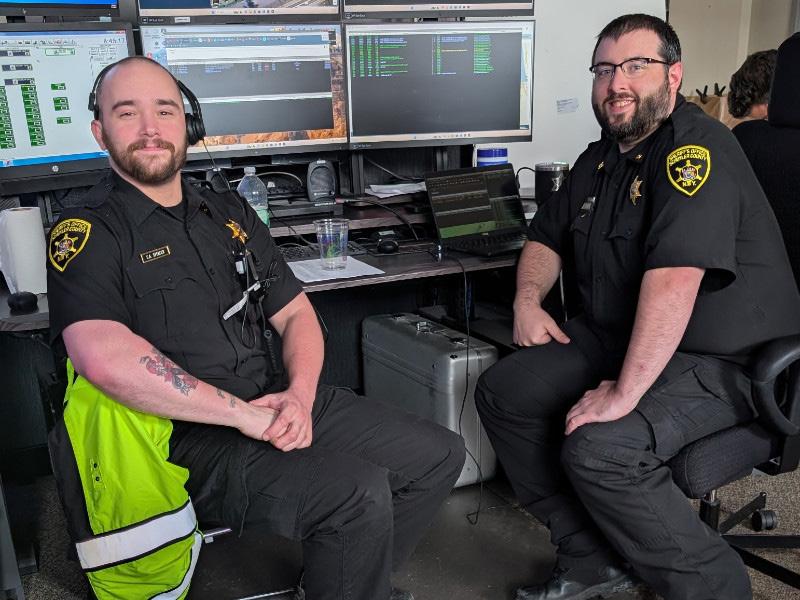
Emergencies often don’t wait for perfect conditions, and increasingly, they don’t come through landlines. In an era dominated by mobile phones, text messaging, and GPS, the need for a smarter, faster, and more adaptable emergency system has become clear. Enter: Next Generation 9-1-1 (NG 9-1-1).
The transition of the 9-1-1 system as we know it aims to improve location accuracy for mobile callers, support textto-911 services, allow photos and videos to be sent from the scene, and ensure robust service even during peak call volumes. While the technology exists, the implementation is far from universal, largely due to one issue: money.
Transforming 9-1-1 across New York State into a fully NG 9-11 capable system is expected to cost around $2 billion over the next decade. While the state has made some investments, most of the responsibility falls to counties, many of which are already financially strained.
So, where’s the funding supposed to come from?
In theory, it already exists, at least partially. Every cellphone bill in New York includes a $1.20 Public Safety Communications Surcharge to fund 9-1-1 operations. Yet under current state law, only $0.70 of that fee is devoted to public safety programs with the other $0.50 diverted into the State’s General Fund. These diverted funds are often used for purposes unrelated to emergency response. In 2024 alone, over $113 million was diverted, part of a long-term trend that’s seen more than $1.3 billion redirected since 2009.
Under Tax Law § 186-g, counties can opt to impose their own local surcharges, up to $0.30 per contracted cellphone and $0.30 per prepaid device. Additionally, under County Law § 303, there is a landline surcharge, $0.35 per line, but that revenue stream continues to dwindle as more residents cut the cord.
The New and Emerging Technologies (NET) 9-1-1 Improvement Act, passed by Congress in 2008, requires 9-1-1-related fees be used solely for 9-1-1 services. Further, to prevent states from diverting funds, states found guilty are not only flagged in Federal Communications Commission (FCC) reports but also risk losing federal grant eligibility for emergency system upgrades.
And yet, New York remains noncompliant, both in terms of fund usage and reporting. Legislative efforts (A.5910 / S.196), aim to reverse this trend, mandating that collected funds actually go toward their intended purpose, to the counties and operational costs to maintain and service PSAPs. This legislation has yet to be enacted into law.
Beyond funding, the future of 9-1-1 in New York hinges on something equally important: coordination. Many counties have begun forming regional consortiums, pooling resources to make smarter, more cost-effective investments.
At the center of this emerging landscape is FirstNet, a nationwide broadband network dedicated to first responders. As FirstNet’s infrastructure expands across New York, the pressure is on counties to upgrade systems that can interface with this cutting-edge platform.

With smart investments, clearer laws, and a commitment to supporting the counties that keep New Yorkers safe, the state can lead the way in building a 21st-century 9-1-1 system.
It’s easy to take 9-1-1 for granted until it doesn’t work the way we expect. Behind every emergency call lies a public safety system that’s evolving to meet the demands of a digital, mobile world.
But until then, counties are doing their best to answer the call with limited tools, limited funds, and a limitless sense of responsibility.

A Wrecking Ball to Washington County’s Economy

KBy Robert Henke, Chairman, Washington County Board of Supervisors
eeping county government running is increasingly challenging. The things we want to do—and the things our residents ask us to do— are frequently sidelined by the mandates the state requires us to fulfill.
In Washington County, state mandates typically consume at least 80% of the total cost borne by taxpayers. These growing unfunded mandates are bad enough. But worse still is when the state actively damages the businesses that form the fragile economic backbone of a small rural county.
That is exactly what happened when the current administration abruptly announced the closure of Great Meadow Correctional Facility.
Great Meadow was the single largest employer in Washington County, part of the county’s economic fabric since 1911. There are established rules for closing significant state facilities—rules designed to minimize harm to host communities.

These include requirements like providing at least one year’s notice before closure and filing an adaptive reuse plan no less than six months in advance. However, tucked quietly into the state’s 2024 budget were provisions allowing these requirements to be bypassed.
According to Corrections leadership, this was intentional— designed to prevent displaced prison employees from securing other jobs in their home communities and effectively forcing them to accept transfers to far-flung areas of the state.
Because Great Meadow represented the largest employer— public or private—the effects of its closure were predicted to be both economically and socially devastating. To assess the true impact, Washington County retained consultant Camoin Associates to conduct a detailed analysis. The findings were sobering.
The closure removed nearly 5% of the county’s employment base, all in jobs above the mean salary. The impact was felt in three ways:
• Direct Impact: The elimination of approximately 650 jobs, along with the payroll dollars no longer circulating in Washington County.
• Indirect Impact: The collapse of supply chain relationships, including local vendors and business-to-business spending that supported the facility’s operations. This extended to the jobs and payroll tied to those businesses.
• Induced Impact: The loss of spending by former employees—everything from groceries to services— that supported other local enterprises. This ripple effect impacted both direct and indirect employment across sectors.
Great Meadow Correctional Facility. Photo by Ed Burke
Economic losses totaled:
• 650 direct jobs and $169 million in lost economic output

NYSTEC’s vCISO and vPO offerings provide you with just-in-time highly experienced cybersecurity resources. Approximately 2,400 jobs lost and an annual cost of $197 million.
• 552 indirect jobs and $7.5 million
• 1,200 induced jobs and $21 million
• The total blow dealt to Washington County: approximately 2,400 jobs and an annual cost of $197 million.
Another key consequence, rarely discussed but critical to local governments, is the loss in sales tax revenue. Camoin Associates conservatively estimated an annual loss of at least $587,000 in sales tax revenue for Washington County.
This kind of economic whiplash may be easier for the Governor to overlook when it’s an upstate, agrarian county like ours. But consider this: removing 4.5% of the available jobs in Washington County is the equivalent of eliminating 171,000 jobs overnight in New York City—a scenario that would surely be treated as a state emergency.
While the financial implications are alarming, the social consequences may be even more damaging. The closure was orchestrated in a way that forced corrections officers and their families to relocate. Spouses with local jobs have also moved away, creating vacancies in schools, hospitals, and professional services.
But the impact doesn’t end there. These departing families also leave behind essential community volunteers—firefighters, EMTs, youth mentors, library staff, and more. Local schools are projected to suffer as well: Fort Ann is expected to lose 9% of its student population, while nearby districts anticipate a 4% decline—leading to cuts in staff, administration, and further ripple effects throughout the community.
For a rural county already contending with widespread poverty and crushing fiscal mandates, this closure could mark a dangerous tipping point. It should never have been executed in such a precipitous and cavalier way.
What we needed was a deft touch. What we got was a wrecking ball.

Solve the challenge of finding qualified and affordable cybersecurity staff for your organization.
Compliance Needs Assessment Services
Development of Information Technology Project Security Requirements and Practices
Incident Response Technical Assistance
Independent Verification and Validation of Vendor Solutions and Practices
Privacy Services
Risk Mitigation Services
Security Incident Response Preparedness Services
Threat Awareness and Research Services


Is it time to consider a self-funded health plan?
Explore the benefits of self-funding for organizations with 100+ employees with the self-funded whitepaper from CDPHP®.
Download the paper to learn:
f The difference between self-funded and fully insured plans
f How a self-funded plan can provide flexibility and cost savings
f Key criteria for selecting a Third-Party Administrator
f And more!
Plus, you’ll learn how CDPHP is reshaping the self-funded market with a focus on quality care and cost containment.




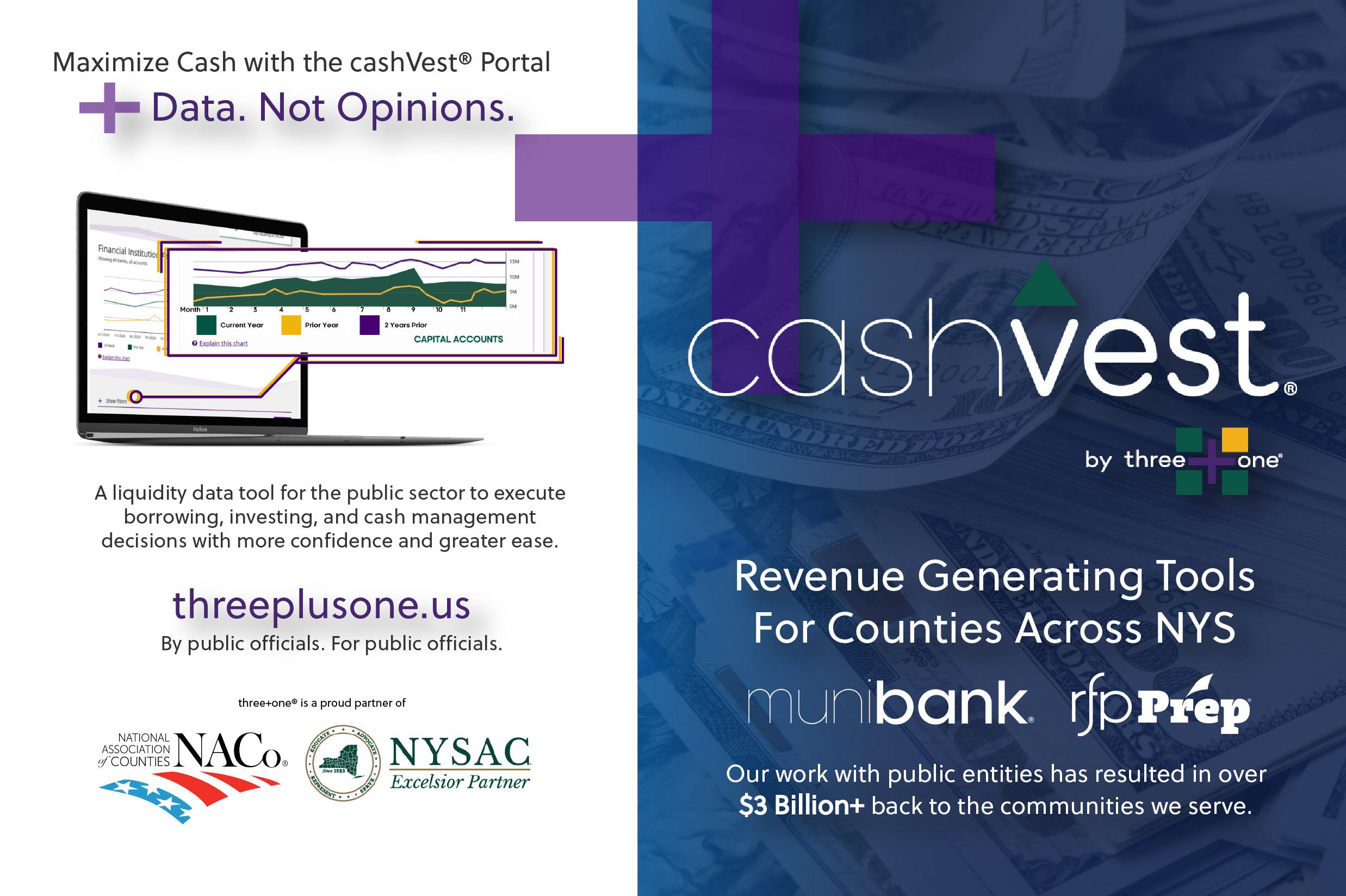
NEW YORK STATE OPIOID HOPE & HELP PSA CAMPAIGN


trellismarketing.com



Our exclusive HOPE & HELP PSA MARKETING CAMPAIGN is an impactful, year-long, multi-media program that can include broadcast television, streaming video, outdoor billboards, social media and more, and can be customized with more elements to meet your county’s needs.
• NYSAC endorsed
• Turnkey and easy to adopt
• Sole source product
• Custom landing page included
• Multi-county partnerships encouraged Robust library of PSAs customized for your county:
• Dangers of Recreational Use
• Breaking the Stigma of SUD
• Real Stories of Recovery
We handle media placement for maximum impact — plus provide robust reporting so you know it’s working.

Amanda Lucchino Director of Business Development amanda@trellismarketing.com 716-725-1271
NYPA brings clean energy solutions and power programs to local governments across New York State.
Clean Energy Solutions from NYPA





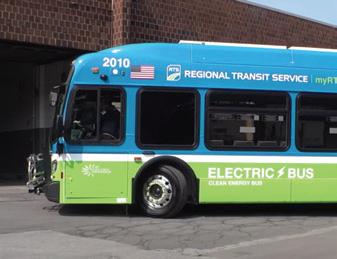
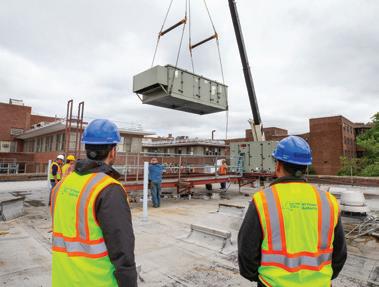

Our experts bring proven audit, planning, procurement, and implementation solutions— together with expansive government experience and knowledge of New York State policy, grants, and incentives.
Talk with us about NYPA’s streamlined bid and procurement process—saving customers time and money.
Let our project managers and engineers serve as an extension of your team—working with you to develop a roadmap for energy savings and GHG reduction
To learn more, provide your information at nypa.gov/services123 EnergySolutions@nypa.gov

County Department in Focus
How Local Health Departments and Their Workforce Deliver Returns for New York’s Localities

PBy Sarah Ravenhall, MHA, CHES, Executive Director, NYSACHO
ublic health law in New York State is nuanced and complex - but it’s also navigable. County leaders play a pivotal role in understanding the statutory responsibilities held by their local health departments (LHDs) and working in partnership with local public health officials. Doing so ensures delivery of essential services, maximizes eligibility for state aid reimbursement, and fosters safer, healthier communities.
It’s important to recognize that county public health structures vary across the state. Some counties operate full-service health departments that provide environmental services, while others are partial-service, with the NYS Department of Health’s district offices managing environmental services. Additionally, some counties operate under local charters, which may impose more specific requirements than those outlined in state statute.
Start with Public Health Law
A good starting point for understanding local public health responsibilities is New York State Public Health Law. County attorneys should engage in discussions about the legal authority of LHDs under both state and local law. Familiarity with these statutes, and the role of LHDs, is crucial to forming productive partnerships between public health leaders and other local government officials. These partnerships are essential to promoting health, securing reimbursements, and sustaining economic viability through grant opportunities.
Article 6 State Aid: An Entitlement Program for Public Health Services
Article 6 of New York State Public Health Law defines the statutory authority of LHDs to provide core public health services (PHL Article 6; 10 NYCRR Part 40).
It also establishes partial reimbursement to counties for eligible services delivered in six core areas:
• Chronic disease prevention
• Communicable disease control
• Family health services
• Emergency preparedness and response
• Community health assessments
• Environmental health (for full-service counties)
beyond the base reimbursement was cut by the state 2019.
Article 6 is an entitlement program, meaning that as long as statutory responsibilities are met and local funds are invested upfront, the locality is eligible for reimbursement. Article 6’s status as a statutory entitlement protects a county’s ability to respond to increased public health needs and unanticipated public health threats with the assurance that the state will pay its share of costs, regardless of what was budgeted. Additional reimbursement program details can be addressed by your LHD’s fiscal staff.
Public Health Personnel: Experience and Qualifications Matter
Who leads this critical prevention work? Public health directors, commissioners, nurses, engineers, environmental sanitarians, epidemiologists, health educators, and nutritionists all trained and qualified professionals.
Many of these titles require specialized training and skills. LHDs must meet state personnel qualifications outlined in 10 NYCRR Part 11. Like other sectors, public health faces workforce challenges in recruitment and retention. Counties are starting to and should consider including public health titles in the NYS Hiring for Emergency Limited Placement Statewide (HELPS) program to help address these staffing needs.

The Return on Investment for Public Health Programming
Investing in public health not only saves lives, but it saves money. Evidence-based research confirms a significant return on investment for targeted public health programs:
• $17 returned for every $1 invested in community weight loss programs.
• $29 returned for every $1 spent on seatbelt and car seat safety programs.
• $60 returned for every $1 spent on influenza vaccinations for older adults.
Additionally, healthy communities support thriving local economies. Public health protections and services directly impact the success of local businesses and the broader economic climate.
Sustaining Economic Investment in Public Health
Public health programming depends on layered investments from federal, state, and local sources. In 2024, approximately $470 million flowed from the federal government to the state and LHDs, excluding Article 6 reimbursements and other direct state-funded public health programs.
While federal and state funds are critical, local dollars remain a cornerstone of effective public health infrastructure. Investing in local public health ensures disease prevention, community safety, and long-term economic stability. The continuous local support and investment will ensure that LHD’s are equipped and prepared to address future needs and public health events. This sustainability will allow counties to maintain healthier places to live.
The New York State Association of County Health Officials remains committed to advocating for protected, sustainable public health funding from both federal and state governments, ensuring support for our members in LHDs and the county leaders who work alongside them.
References
Return on investment of public health interventions: a systematic review | Journal of Epidemiology & Community Health
Cost Effectiveness and Return on Investment of a Scalable Community Weight Loss Intervention - PMC
https://www.firstthingsfirst.org/early-childhood-matters/investing-in-early-childhood/ https://workplacementalhealth.org/getmedia/a7e91362-0057-4cfd-aad7-35da74f32f92/Collaborative-Care-Model-Infographic
Building Resilient Counties A Strategic Approach to Risk and Governance

CBy Daniel G. Castricone, Esq., Risk Management Officer for Orange County
ounty governments throughout the country face an evolving landscape of risk—climate change, cyberattacks, infrastructure decay, litigation exposure, workforce pressures, and economic volatility. In this environment, effective risk management is not simply a back-office function. It is a core expression of fiduciary duty.
Unlike private companies, counties exist to serve the public. Our mission is to provide essential services and ensure long-term stability for our residents, employees, and local businesses. That requires not only fiscal prudence but strategic foresight—an approach to risk that protects our institutions, not just our budgets.
At the heart of public sector risk management is our responsibility to anticipate events, build resilience, and design systems that absorb shocks without passing the cost on to taxpayers. When counties lean on tax increases and bonding to fill the gaps left by unmanaged or poorly transferred risk, we compromise both public trust and economic equity.

waivers of subrogation, and tailored cyber extensions can mean the difference between a covered loss and a costly gap.
Preserving tax rate stability requires more than good intentions. It calls for a deliberate, structured approach to fiscal planning and risk transfer. That begins with robust reserves and diversified revenue strategies, but it must also include a sophisticated use of insurance, vendor risk controls, and contractual safeguards.
In today’s risk environment, insurance must be viewed as a strategic lever—not a check-the-box expense. This means counties should regularly market their insurance programs, negotiate meaningful endorsements, and assess self-insured retention levels based on both risk appetite and actuarial data.
Careful attention must also be paid to third-party exposures. Every contract the county enters with a vendor, contractor, or partner represents a potential liability and must be reviewed for compliance with insurance and indemnification terms, along with third party actions and reputational concerns.
Vendor relationships must be managed continuously, not just at the time of signature. Certificate tracking, contract monitoring, and periodic audits help ensure that required coverages are not only in place, but adequate and enforceable. Endorsements such as primary and non-contributory language,
Just as important is the thoughtful selection of self-insured retention levels. Setting the bar too low can lead to unaffordable premiums. Too high, and the county risks bearing the brunt of large claims out of pocket. Risk modeling and loss forecasting can help decision-makers strike the right balance between affordability and protection.
While financial risk transfer is essential, counties must also focus on building resilience from within. Infrastructure vulnerabilities, if left unaddressed, don’t just jeopardize service delivery—they magnify liability. Capital improvement plans should be grounded in risk assessment, with priority given to projects that mitigate known exposures. Facilities, roadways, water systems, and emergency networks must be hardened against increasingly frequent and severe natural events.
Operational resilience is equally important. Counties should maintain updated and tested Continuity of Operations Plans to ensure essential services—public safety, public health, finance, communications—remain uninterrupted during crises. And no discussion of resilience is complete without addressing cybersecurity. From ransomware to phishing to social engineering fraud, counties must view cyber risk as a top-tier threat and invest in the policies, training, detection, and response tools necessary to manage it.
Of course, no risk management framework is complete without a strong foundation in governance. County leaders must make decisions through the lens of fiduciary responsibility—not just to balance the books, but to protect the people and systems that depend on government functioning. That includes our workforce, which must be properly staffed, supported, and prepared for succession. It includes our local business community, which relies on county services to thrive. And it includes our constituents, who rightly expect government to operate with transparency, stability, and accountability.

That fiduciary lens must also guide how we adopt new technologies or modernize service delivery. While innovation is necessary, especially in the face of staffing and efficiency pressures, it must be pursued with caution. Counties should pilot new initiatives before broad implementation, require
risk-conscious procurement terms from vendors, and include legal and IT review in every major systems upgrade. Every modernization effort should undergo a cost-benefit-risk analysis before approval—not after problems arise.
Finally, counties must communicate their approach to risk clearly and transparently. Public trust is strengthened when residents understand how their government is protecting resources, preventing disruption, and managing long-term obligations.
The reality is that counties cannot eliminate risk—but we can control how we prepare for and respond to it. By anchoring our strategies in fiduciary responsibility, counties can preserve the stability of services, the confidence of taxpayers, and the integrity of our institutions.
MEETING PROCUREMENT NEEDS, CREATING JOBS IN COMMUNITIES
•
•
•

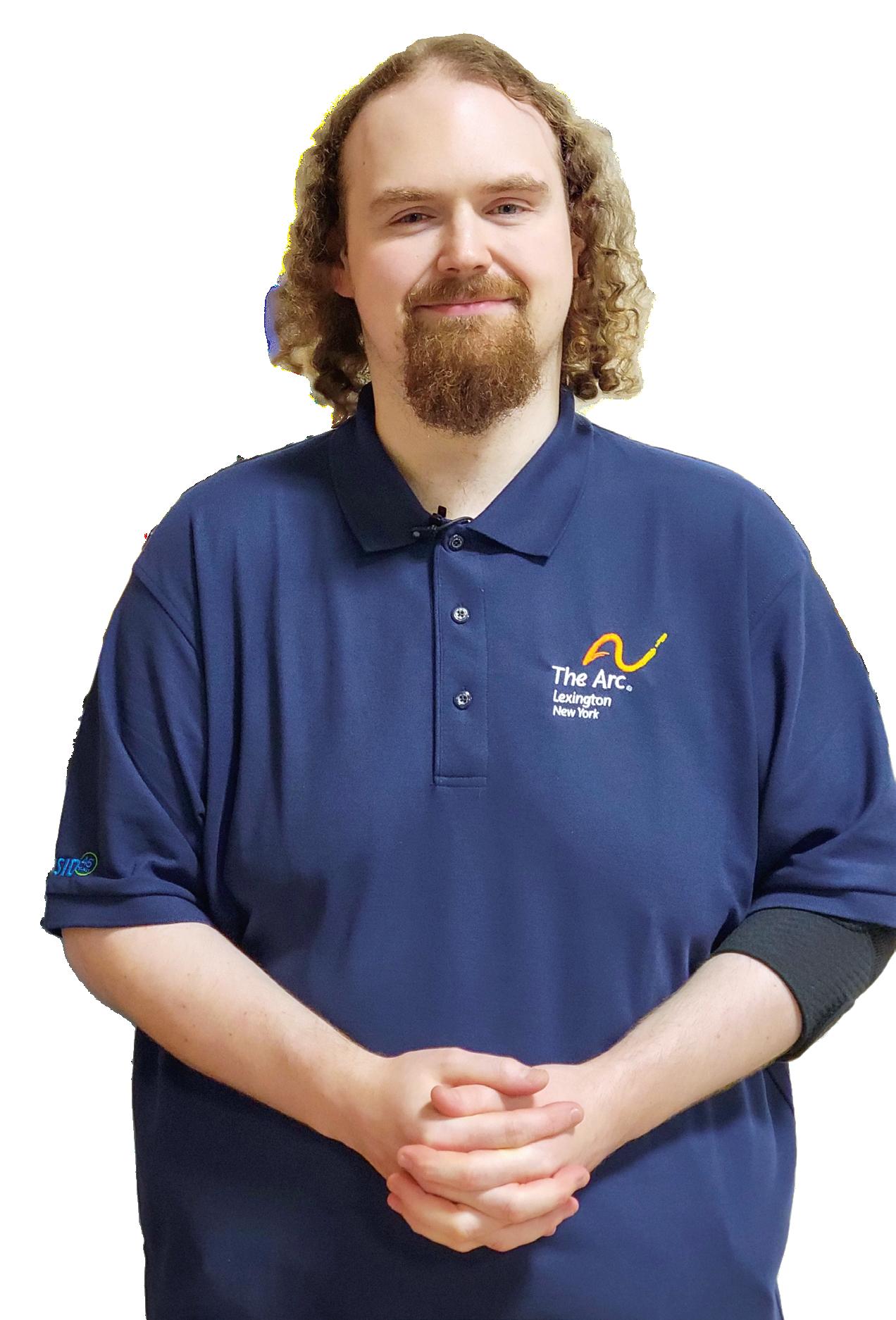


At PMI U.S., we’re on a mission to improve public health by offering innovative nicotine products that help 45 million American nicotine consumers, including 30 million adults 21+ who smoke, switch from traditional tobacco products to better alternatives. Helping people make a change.


Empowering Innovation
RPI and Westchester Team Up to Train Tomorrow’s Talent

IBy Westchester County Government
n a significant move to enhance workforce development and bolster the regional economy, Westchester County has partnered with Rensselaer Polytechnic Institute (RPI), bringing more than 200 years of academic excellence to local residents and employers. This dynamic new partnership will expand access to cutting-edge STEM education and professional development opportunities—empowering individuals and industries throughout Westchester with the capabilities needed to succeed in a rapidly evolving technological landscape.
Announced during the 2025 State of the County Address by Westchester County Executive Ken Jenkins, the collaboration focuses on preparing Westchester’s workforce for growth in high-demand fields such as quantum computing, advanced manufacturing, life sciences, clean energy and technology. The initiative reflects the county’s broader commitment to futureready economic development and its investment in residents as the foundation of regional progress.
At the heart of this collaboration is RPI’s renowned “Rensselaer at Work” program—an advanced, online, project-based curriculum designed for working professionals. The program connects students with real-world challenges and industry experts, enabling participants to earn accredited undergraduate and graduate degrees or certificates while applying what they learn directly to their fields.
“This collaboration brings cutting-edge academic and workforce development opportunities directly to Westchester County, helping us invest in our most valuable asset—our people,” said Westchester County Executive Ken Jenkins. “Our employers have told us they want to hire more employees with engineering-related capabilities. By giving our talented local workforce access to advanced education and ability-building programs right here at home, we are strengthening Westchester’s economy, empowering our residents, and positioning the county as a hub for innovation and talent.”
RPI President Martin A. Schmidt, Ph.D., echoed this sentiment, emphasizing the strategic importance of the initiative. “RPI is honored to partner with Westchester County to broaden access to world-class engineering education for the region’s workforce,” said Schmidt. “This collaboration accelerates the transformation of the Hudson Valley into Quantum Valley— positioning the region at the forefront of quantum computing and advanced technologies.”
To further support this vision, RPI will introduce its noncredit, eight-week Intro to Applied Quantum ProCourse, a foundational online program designed to make emerging quantum technologies more accessible to working professionals. In addition, RPI plans to hire a dedicated, Westchester-based business development professional who will coordinate local programming, work directly with regional employers, and help align education offerings with the county’s evolving economic needs.
This initiative is part of Westchester County’s broader efforts to foster inclusive economic growth, retain top talent, and attract new industries. By partnering with a prestigious institution like RPI, the county is creating a talent pipeline built to meet the demands of 21st-century innovation.
Residents, job seekers, and employers interested in exploring these new opportunities are encouraged to visit the Westchester Catalyst website. Here you can learn more about how to access online graduate degrees, graduate-level certificates and a range of non-credit professional courses designed for immediate impact.
This strategic alliance between Westchester County and RPI represents a bold, forward-thinking approach to regional development. By making high-quality, on-demand STEM education more accessible, the county is building a thriving ecosystem for innovation—one that will shape the future of its economy, its workforce, and its communities for generations to come.



Addressing Social Isolation

YBy Daniel P. McCoy, Albany County Executive
ou cannot have public health without mental health. We have known for some time that they are directly connected, and that became even clearer in the aftermath of the pandemic and economic shutdown. It is not an exaggeration to say that social connection is as important to our survival as food and water—it is something profoundly human. What we are seeing today is an alarming drop in social connection. In 2024, the US Surgeon General, Dr. Vivek Murthy, declared loneliness and social isolation a national epidemic. Rates of loneliness are highest among young people—at over 50%—and not just in the US, but in other developed and developing nations. We also know that social isolation is an issue with older residents.
It’s important to note that loneliness is not simply a bad feeling. It’s a leading indicator of what’s to come. Loneliness is shown to lead to depression, anxiety, and even addiction and suicide. It also increases the risk of physical illness, increasing the risk of stroke by 29 percent and the risk of dementia by 50 percent, and overall, increasing the risk of premature death. These health risks are comparable to obesity and smoking. Beyond public health, loneliness and mental health challenges impact educational outcomes, work productivity, and how individuals interact with our societal institutions. It cannot be easily seen; it hides in plain sight.
So, what are we missing as a society—what has changed? Part of it is a general decline in participation in recreational leagues, service organizations, and faith-based institutions. Part of it is the stigma and the lack of importance placed on mental healthcare services. Part of it is technology and the explosion in popularity of social media. Advances in technology have boosted productivity and prosperity in many ways; however, some of those advances have made us less reliant on social interactions and human connections. You no longer have to go to the store or restaurants for food and groceries. Many employers still offer at least some level of remote work throughout the week, and some companies haven’t brought any of their staff back into the office.
invest in recreational opportunities that can prevent social isolation in the first place. Over the last three years, Albany County has expanded programming beyond the traditional sports-centric view of recreation. We offer basketball and flag football, e-sports, dance, Dungeons and Dragons, Taekwondo, wilderness exploration, STEM, and more. We are meeting youth where they are, because not every child wants to engage in athletics.
At our county-owned nursing home, Shaker Place, we are offering wheelchair yoga classes, and we even developed intergenerational programming that connects our seniors with the Little Sprouts Daycare Center for story time and more.
And we are expanding the number of county facilities that offer our recreational programming. Just last month we closed on the purchase of the former Gateway Sports Complex in Cohoes, and soon the county will offer programs at the athletic center at the former College of Saint Rose in Albany. At both locations, we will be able to offer our lifeguard certification and soon will have a “learn to swim” program available.
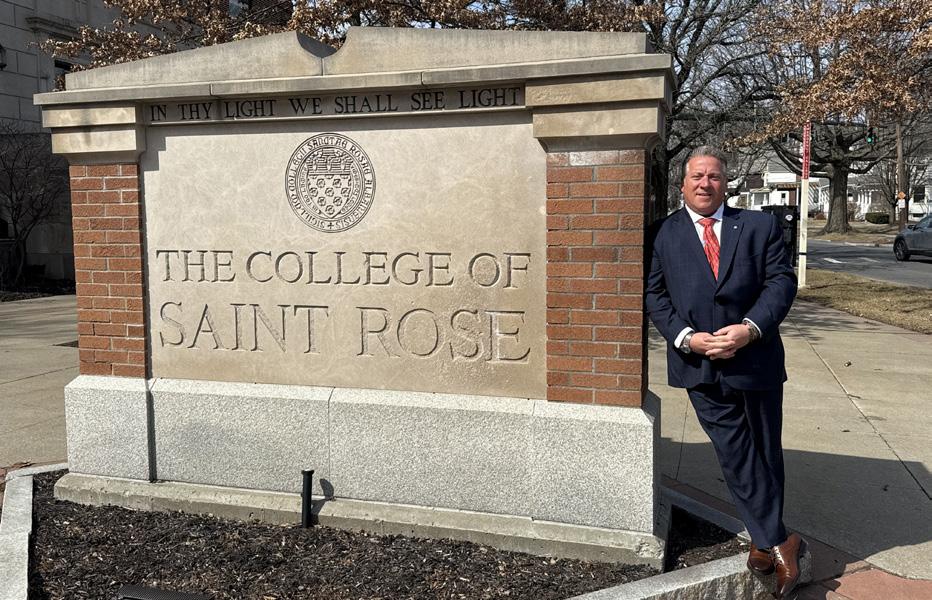
Additionally, the former library on the Saint Rose campus will be converted into a new senior center, which is right next door to the athletic center. We will offer areas to socialize, use the computer or learn computer skills, read, enjoy art classes, watch movies, and visit with others in an intergenerational space where grandparents can bring their grandchildren to play, read, do homework, or engage in kids’ activities.
While direct behavioral health services and addiction interventions are an important part of the Albany County budget, we also need to be thinking creatively about how we
The average young person spends nearly five hours each day on social media. Albany County is dedicated to giving them and their loved ones as many reasons as possible to put down their phones and interact in person and to develop connections. In general, these new spaces and programs we are investing in will help to build a stronger sense of community and a feeling that each of our residents is supported by the neighbors around them. This is by no means a cure for addressing social isolation, loneliness, and many mental health issues, but we need to create opportunities for more human face-to-face communication, and I believe we will see the positive impacts in the near future.

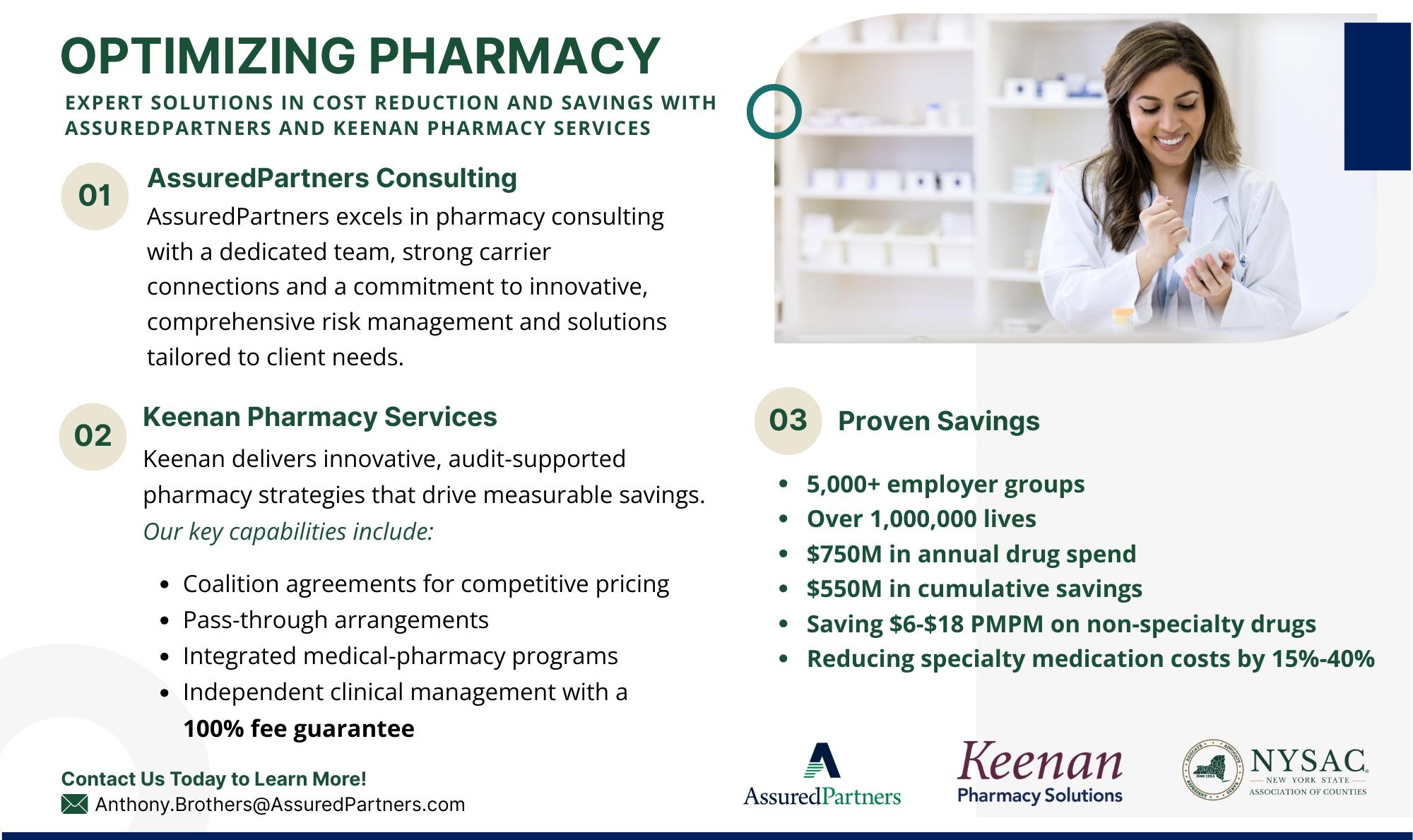






To celebrate this once-in-a-lifetime anniversary in style, we've launched a NYSAC Centennial Store featuring a collection of specially designed shirts, jackets, mugs, and more that commemorate this historic milestone!
Scan this QR Code to shop exclusive merchandise

County Executive’s Corner Fighting for Local Control in Rockland County
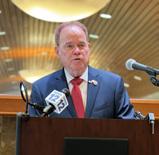
ABy Ed Day, Rockland County Executive
s County Executive, my top priority has always been protecting the integrity, character, and quality of life of Rockland County’s communities. That’s why I am strongly opposed to the proposed Faith-Based Affordable Housing Act (S3397A/A3647), currently under consideration in Albany.
This legislation is a blatant attempt to override the rights of local communities by allowing houses of worship—such as churches, temples, synagogues, and mosques—to bypass local zoning rules and fast-track the construction of high-density housing. Under this bill, any religious institution could build affordable housing at a rate of up to 30 units per acre in municipalities under 50,000 people, and 50 units per acre in larger municipalities—all without local approval or planning input.
Additionally, government giving preference to a religious institution is also problematic constitutionally.
Let me be clear: I am not opposed to affordable housing. In fact, Rockland County has taken proactive steps to address this issue in ways that are smart, sustainable, and respectful of local needs. But this bill takes the wrong approach. It strips away
local control, forces a one-size-fits-all policy on our towns and villages, and severely limits the ability of local governments to manage responsible growth.
We are already feeling the strain on our infrastructure—our roads, schools, emergency services, and water systems. Forcing sudden and uncoordinated high-density development onto our communities without proper planning will only worsen these challenges. It’s not just bad policy—it’s dangerous.
Rockland has shown it is possible to expand housing while still maintaining community character. We work hand in hand with our municipalities to develop solutions that make sense locally. That collaboration is essential and must not be cast aside for a statewide mandate that ignores the realities on the ground.
I urge our state legislators to reject this misguided bill and stand with us in defending home rule. I also urge my fellow county executives to stand with me in this fight for local control.
We cannot sit quietly while Albany tries once again to dismantle local authority. We will continue to advocate for solutions that work—for our families, our infrastructure, and our future.

Mental Health First Aid Pilot Expands to More Colleges in New York State

TBy Francine Sinkoff, Director of Communications, NYS Conference of Local Mental Hygiene Directors
he New York State Conference of Local Mental Hygiene Directors (the Conference), in collaboration with the Office of Mental Health (OMH) and the Office of Addiction Services and Supports (OASAS), is entering the second year of an innovative pilot aimed at expanding mental health and harm reduction training in higher education settings. The Conference represents the County Directors of Community Services (DCSs), who oversee local mental health, substance use, and developmental disability services across New York State.
The initiative, known as the Mental Health First Aid (MHFA)/Harm Reduction in Higher Education Project, builds on more than a decade of the Conference’s statewide MHFA efforts and introduces a targeted approach to improving student wellness and safety on college campuses.
MHFA is an evidence-based training program developed by the National Council for Mental Wellbeing. It equips individuals, especially nonclinicians, with the skills to recognize, understand, and respond to signs of mental health and substance use challenges. The training is designed to empower faculty, staff, and student leaders with tools to offer initial support until professional help can be accessed.

During the project’s first year, 30 faculty and staff from five institutions were certified as MHFA instructors. Participating colleges included Monroe Community College, SUNY Cobleskill, SUNY Orange, Vassar College, and York College/ CUNY. With each college committed to delivering at least three courses annually, with a maximum capacity of 30 participants per session, this model could potentially train up to 2,700 individuals across the five campuses by October 2025.
The pilot was shaped by strategic partnerships between state agencies, local government leaders, and campus administrators. DCSs, who serve as behavioral health authorities in their respective counties, played a vital role by identifying interested
From left: Eric D'Entrone, Clinical Program Director at the Dutchess County Department of Mental Health, with Vassar’s MHFA instructors for the pilot— Heidi Hunsberger, Campus Safety Administrative Lieutenant; Kaitlin Leach, Deputy Director of Athletics, Director of Student-Athlete Welfare and Senior Woman Administrator; Andrea Pesavento, Director of Health Promotion and Education; Michelle Quock, Director of First-generation, Low Income (FLI) Program; Jared Hunter, House Advisor, Office of Residential Life; and Luis Inoa, Associate Dean of the College for Residential Life and Wellness. Not shown: Nicole Adamo, Program Coordinator/Health Educator.
colleges and ensuring alignment with local service planning priorities.
The success of the first year set the stage for expansion. With continued support from OMH, Year 2 will include additional campuses, further embedding mental health literacy and early intervention strategies in college communities. The pilot also integrates harm reduction strategies from OASAS, supporting a comprehensive approach to student well-being.
Participating counties report that the project has created new pathways for collaboration between local mental health systems and colleges. In Dutchess County, for example, officials emphasized the importance of empowering everyday community members with the ability to recognize and respond to mental health crises. The training is seen as a way to ensure that no one navigates such challenges alone.
In Schoharie County, MHFA was described as a catalyst for expanding access to crisis systems and strengthening ties between the campus and the surrounding community. County leaders noted that having paraprofessionals trained in mental health and substance use response, both on and off campus, has enhanced their ability to intervene early and reduce the risk of emergencies.
Colleges, too, have seen tangible benefits. Monroe Community College reported that the initiative not only increased awareness of mental health but also spurred new collaborations among staff. At SUNY Cobleskill, MHFA was integrated into existing training requirements for student leaders, replacing multiple prior sessions with one comprehensive course. The result: all Resident Assistants on campus are now certified in MHFA, offering a scalable and sustainable approach to peer support.
As the project grows, steps are being taken to refine and strengthen its implementation. Year 2 will focus on improving training logistics, enhancing data collection and reporting, and building long-term sustainability through stronger institutional engagement. These lessons will help shape a replicable statewide model for supporting student mental health across New York’s diverse higher education landscape.
This initiative highlights the value of cross-sector collaboration and the importance of grounding statewide programs in local priorities. By aligning mental health and harm reduction efforts with campus needs and community supports, the Conference and its partners are working toward a healthier future for New York’s college students.







CLEAN ENERGY CREATES JOBS

More than 171,000 New Yorkers now work in Clean Energy*






*NYSERDA New York Clean Energy Industry Report 2023

Connecting Communities
The Onondaga County Broadband Initiative
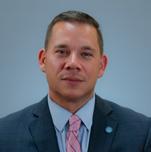
PBy Ryan McMahon, Onondaga County Executive
rior to 2022, broadband access in many rural areas of Onondaga County was limited or nonexistent. My administration first became aware of the severity of the issue through District 12 Legislator Dave Knapp, who represents a large portion of those rural towns and villages. After hearing from Legislator Knapp and other concerned community members, we began working collaboratively to develop a long-term solution to broadband connectivity challenges in our county.
Previously, efforts to address this issue—such as participation in the New York State Broadband Program—yielded limited results due to restrictions in how census blocks were designated and bid upon. But in 2022, real progress began to take shape.
Onondaga County partnered with the Central New York Regional Planning and Development Board (CNYRPDB), which was working with ECC Technologies to conduct a physical survey of unserved properties by mapping roads across the county. Their findings revealed that at least 27 towns and villages lacked reliable broadband access.
In response, my administration allocated American Rescue Plan Act (ARPA) funds to support the buildout of new fiber infrastructure. Our goal was not only to provide high-speed internet, but to ensure affordability for all, including offering lowcost options for incomeeligible households. It was time to stop discussing the problem and take definitive action to solve it.
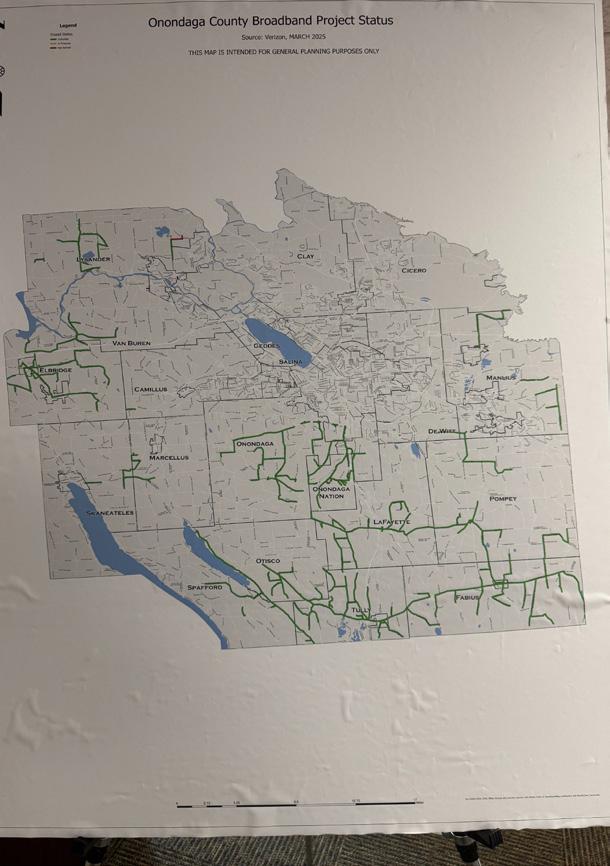
In the summer of 2022, Onondaga County issued a Request for Proposals (RFP), seeking vendors that could help bridge the digital divide.

The contract was ultimately awarded to Verizon, and work commenced shortly thereafter.
The first step involved outreach to property owners to notify them of their eligibility for the broadband project. Verizon also distributed mailers to residents once FIOS became available at their address.
Communities Reached
The towns and villages included in the project were:
Apulia Station, Baldwinsville, Chittenango, Clay, De Ruyter, Elbridge, Fabius, Fayetteville, Fulton, Homer, Jamesville, Jordan, Kirkville, LaFayette, Manlius, Marcellus, Marietta, Memphis, Nedrow, New Woodstock, Otisco, Phoenix, Preble, Skaneateles, Syracuse, Tully, and Warners.
Over the course of the project, approximately 351 miles of fiber were installed. As a result, thousands of previously unconnected residents now have access to fast, reliable, and affordable internet service.
The Onondaga County Broadband Connectivity Project has made significant strides in addressing digital equity and strengthening our infrastructure. This initiative not only empowers residents today but lays the groundwork for economic opportunity, education, and innovation well into the future.
Food for Thought An Appetite for Collaboration in Chenango County

TBy Shane Butler, Director of Planning and Airport Administration, Chenango County Department of Planning & Development
he Chenango County Department of Planning and Development has been participating in the NYSERDA Clean Energy Communities (CEC) Program since 2017, with the county being designated a “Clean Energy Community” in 2019. As funding was awarded, we utilized the funding to complete additional benchmarks, creating a financial dominoeffect for additional projects, ultimately leading to an LED lighting project at Lt. Warren E. Eaton Airport (OIC) and three rounds of purchases of electric landscaping equipment for multiple departments including the Airport, Preston Manor, Public Facilities, Public Works and the Sherriff’s Department. Add in a few County-Hosted Trainings, Community Campaigns, and we found ourselves eligible for $187,500 in funding!
Having already satisfied other departments, there were a few realistic ideas for renewable energy projects. Now what? We were running out of time.
A discussion began happening with the Chenango County Area Agency on Aging (AAOA) about their Home-Delivered Meals Program. AAOA had recently ended a contract with the operators of the Public Transit System to deliver homebased meals. With limited geographic outreach to residents, and increased financial burdens, the AAOA decided to end the contract and purchase three Chevy Traverses to deliver them in-house. Demand for meals and outreach increased, and employees were still using personal vehicles.
And then, a lightbulb (LED of course!) turned on; “We could use the NYSERDA funding to purchase electric vehicles and charging stations to save money!”
The best ideas aren’t always the easiest; the vehicles would be the first EV’s in the county fleet. The questions began to pile up; What about insurance? How are you going to charge them? What are the maintenance costs? Do they really need four more? Will they hold a long enough charge?
With some financial analysis comparing the federal mileage rate of personal vehicles to the anticipated range of the EV, several meetings and discussions to answer insurance and maintenance questions, and a little creativity and problem solving, we received the official go ahead to issue an RFP to

purchase four electric vehicles. Issuing the RFP went smoothly and in January 2025, we drove back four Subaru Solterras to Norwich! Using additional funds, we will be installing our own charging stations soon which we hope will provide additional cost savings for the program.
So far, the vehicles have been everything we’d hope they’d be; a cost-saving solution to increasing outreach and the availability of nutritious meals to residents aged 60+.
Heather Collier, Director of the Chenango County Area Agency on Aging reports that, “On average, it costs around $0.15 per mile in colder weather with the heat on and has since decreased with warmer temperatures. Since the EV’s arrived, we have been able to increase the number of client meal deliveries with the new vehicles, serving an additional 6 clients each month with an average of 5-7 meals each week. Much of our work is driven to assist older adults to age in place. With the addition of the EV’s it has allowed us to increase our footprint to further areas in our county that are not within the City of Norwich. The vehicles have also been beneficial with our Outreach Workers in addition to our Home Delivered Meal Program and Senior Food Boxes with our collaboration with the CNY Food Bank.”
An added bonus has been that this project made us eligible for MORE funding! The new award is being used to install electric, air-source heat pumps at Preston Manor, our county-operated adult home. Needless to say, we hope NYS will continue this successful program and maybe expand the concept to other types of programs.
Advertiser Index

Click, Search, Done!
Ulster County’s Dashboards Make Information Available to the Public While Saving Staff Time

IBy March Gallagher, Ulster County Comptroller
f you’ve ever found yourself buried in a Freedom of Information Law (FOIL) request—or scrambling to locate a contract or payroll detail for an elected official or constituent—you’re going to like this.
Ulster County has rolled out two powerful new tools designed to not only increase transparency but also to make life a whole lot easier for county employees: the Vendor Dashboard and the Pay Dashboard.
Built in-house by the Ulster County Comptroller’s Office using PowerBI, these interactive dashboards offer instant access to years of county data. From contracts and amendments to vendor payments and employee compensation, it’s all now just a click away.
That means less time searching, less back-and-forth, and fewer FOIL requests landing on your desk. Let’s be honest, FOIL requests take time. A lot of it. And for many departments, it’s the same types of requests over and over—questions about vendor payments, contract documents, or payroll details.
In Ulster County, our County Legislators do not have easy access to the county’s financial system. The result is that they must ask legislative staff each time they want to review a contract or status of how much has been spent with a particular vendor. Although contracts were previously available when they voted to approve them in committee or on the floor, the packets containing those contracts can exceed 1,000 pages in length and are difficult to access weeks or years after the relevant session.

The Comptroller’s Office recognized this challenge and responded by turning repetitive data requests into an intuitive, self-service system. These dashboards let constituents, journalists, legislators, and department heads access the information themselves, without having to involve your inbox.
You can even use it yourself to find data faster—no special system access required.
• The Pay Dashboard was launched in September 2023. It breaks down base pay, overtime, and other pay for every county employee. It’s updated annually, with the most recent update released in March 2025.
• The Vendor Dashboard came online in November 2024. It lets users browse more than 2,000 contract documents and 1,000 amendments, searchable by department, vendor, and contract type. It’s updated monthly, so it’s always fresh.
The Comptroller’s Office has been able to add functionality requested by the Legislature and constituents, including releasing a mobile-compatible version so people can access data on the go, adding P-Card spending data, and identifying vendor type so users can easily search for nonprofits, government agencies or other entity types.
Since the dashboards launched, we have identified over 1,100 expired contracts and flagged them for closure. FOIL requests have dropped for common inquiries, especially for contracts and payroll data. Departments have reported the dashboards are easier to search than the internal systems.
Legislators are better informed, which cuts down on lastminute data requests before meetings. Best of all, you don’t need IT credentials or special permissions. The dashboards are fully public, and you can access them from anywhere.
Need to direct someone asking about contract spending? Send them the link. Have a constituent who wants to know how much an employee earned in overtime last year? It’s all right there.
And if you’re wondering what it cost to create these tools— here’s the best part: the dashboards were built in-house. Aside from a $168 PowerBI license (which we initially aquired through a free trial), the only real expense was staff time—and just 20% of one staff member’s hours went toward building them, with data review by the audit team.
The response has been overwhelmingly positive. Residents have said, “This will definitely shape things up now that public eyes can really see. Thank you for this,” and “this takes transparency to a new level!”
From inside government, we’ve heard that the dashboards aren’t just useful—they’re saving time.
County government is sitting on mountains of data. Why not make it public so next time someone comes calling for information, don’t reach for the file cabinet or internal portal— send them the link?
Transparency has never been this easy.

Poison Risk Prevention Saratoga County Partners with Upstate New York Poison Center to Bolster Poison Prevention Efforts with Innovative Poison Data Dashboard

SBy Steve Bulger, Saratoga County Administrator
aratoga County has unveiled a powerful tool that’s helping to shape poison prevention education efforts and remind residents of the importance of poison prevention. The Saratoga County Department of Health (SCDOH), partnering with Upstate New York Poison Center, has developed a public dashboard that provides vital, localized poison data that organizations can use for poison prevention education efforts within the county. This partnership between Saratoga County and Upstate New York Poison Center is the first of its kind in the state and officials hope it becomes a model for other counties to follow.
Saratoga County Board of Supervisors Chairman Phil Barrett (Clifton Park) said, “Poison prevention, awareness, and education are vital components of public health and public safety that help to save lives. The DOH poison dashboard is an important tool in the county’s overall commitment to public health and safety that is already being used not only by county departments, but also community organizations.”
SCDOH epidemiologists update the dashboard monthly, analyzing call data collected by Upstate New York Poison Center on exposures from harmful substances to identify emerging hazards and high-risk populations in Saratoga County. This information plays a key role in spotting trends to reveal poisoning risks and exposures, such as household
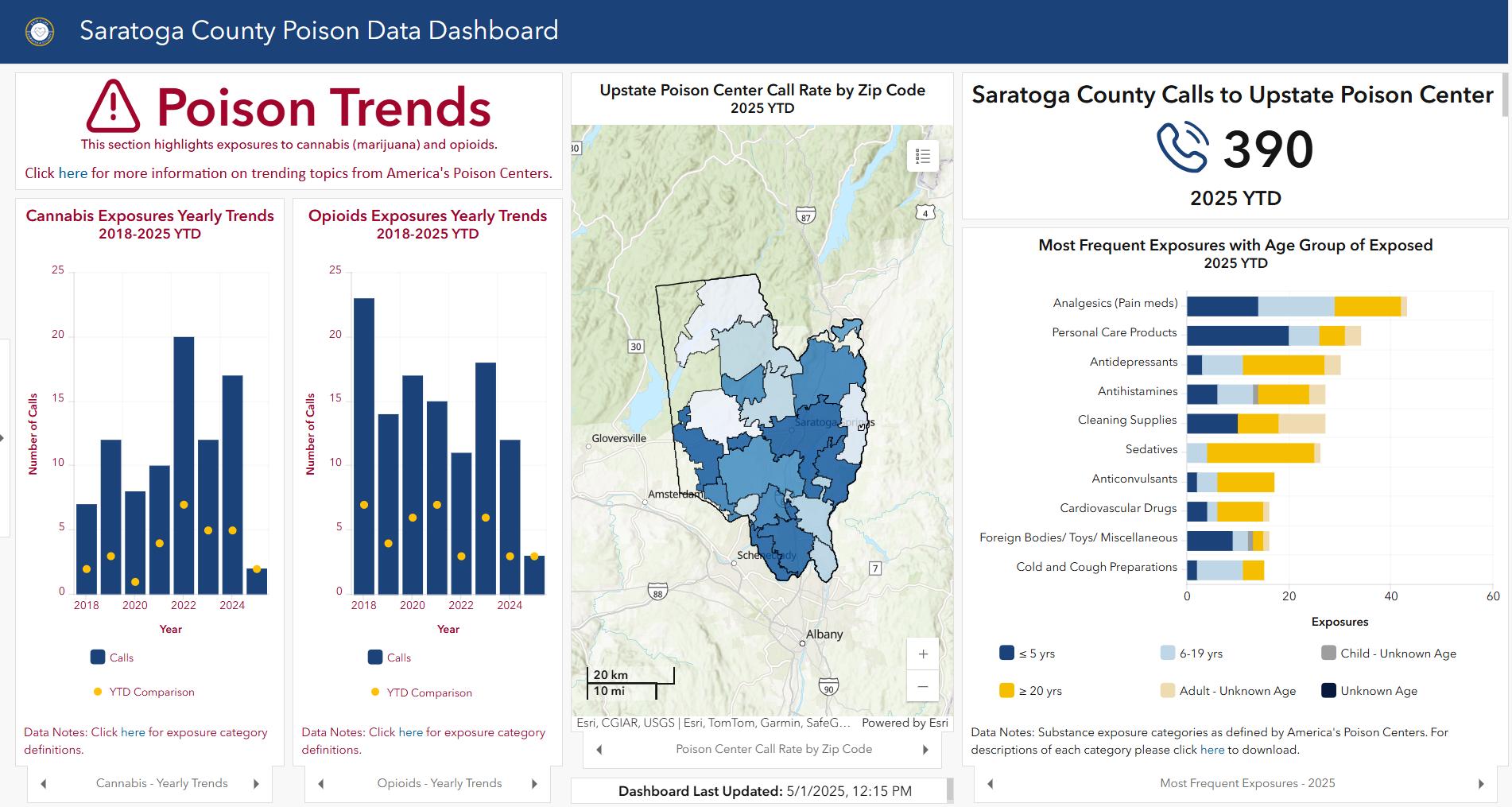
products, medications, or recreational marijuana, and in developing tailored and targeted education to reach the most affected populations.
“We’re proud to partner with Saratoga County on this first-ofits-kind dashboard that brings vital, localized poison data into public view,” says Jeanna Marraffa, PharmD, MPH, Clinical Director of the Upstate New York Poison Center. “When communities have access to real-time data, they’re better equipped to recognize risks, respond quickly, and prevent harm. This collaboration is a powerful example of how datadriven education can save lives.”
Saratoga County Department of Health Commissioner Daniel Kuhles, MD, MPH said, “Understanding poison data is essential for effective prevention efforts, helping to identify risks, track trends, and guide public health strategies to protect communities from harmful exposures. I thank Upstate New York Poison Center for sharing their call data with our epidemiologists so we can track current data on potentially harmful substances that Saratoga County residents, young and old, are exposed to and help shape poison prevention efforts.”
According to the Dashboard Statistics:
• Unintentional pediatric exposures to edibles are the most frequent reason for poison center calls about cannabis and have increased in recent years.
• In 2024 the top exposures to children age 5 and under were personal care products/cosmetics; cleaning supplies; foreign bodies/toys/miscellaneous; pain medications; and vitamins.
• The top exposures to adults age 20 and older in 2024 were sedatives, pain medications, antidepressants, alcohol, and cardiovascular drugs.
Amy McBride, Executive Director of the Prevention Council of Saratoga County said, “The Saratoga County Poison Data Dashboard has been a helpful tool for our agency. We recently used this data for our campaign aimed at locking up cannabis to avoid accidental poisoning. This data helps to inform and strengthen our prevention efforts in the community.”
The Upstate New York Poison Center serves 54 counties across New York State, providing lifesaving support and expert guidance during poisoning emergencies. The center is staffed by highly trained specialists in poison information, including nurses, pharmacists, and doctors with specialized knowledge in toxicology. In 2024, they managed over 50,000 cases, helping to manage and keep 68% of callers safely at home without needing a visit to a health care facility. There are typically between 80 and 100 calls from Saratoga County to the poison center each month resulting in more than 1,000 calls each year.
Residents are encouraged to use the SCDOH dashboard to become aware of common poisoning substances and to take simple yet effective actions to reduce poisoning risks at home and in their communities.
• Keep medicines, cleaning products, recreational marijuana, and toxic substances locked up and out of reach of children and pets.
• Always follow dosing instructions for medications and heed warning labels on household products.
• Coin-size button batteries, used in a variety of electronics, are dangerous if swallowed. Do not leave products with accessible button batteries within reach of children.
• Use take-back programs or follow FDA guidelines for safe disposal of medications.
To view the Saratoga County Poison Data Dashboard, visit www.saratogacountyny.gov/DOH .
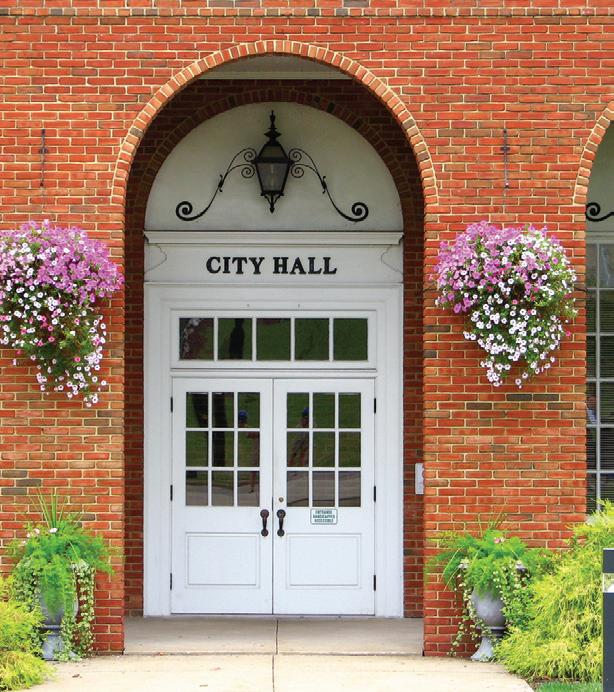
Did You Know?


• NYSHIP is available to virtually all public employers across New York State
• Over 800 counties, cities, towns, villages, school districts and special districts participate in NYSHIP
• More than 1.2 million public employees, retirees and their families have health insurance through NYSHIP
A unique health insurance plan developed for New York’s public employees
For additional information regarding The Empire Plan or the Excelsior Plan, public employers may visit our website at www.cs.ny.gov or email the Public Employer Liaison Unit (PELU) for the New York State Health Insurance Program at PELU@cs.ny.gov.


Structural
Geotechnical
Environmental
Construction




Warren County Creates New Site to Compile Tick-Related Data

CBy Don Lehman, Warren County Director of Public Affairs
ounty Public Health agencies around New York have been fielding more reports of tick-borne illness in recent years, as warmer winters have allowed ticks to live in northern areas where cold once killed them off.
Warren County’s per capita rates of Lyme Disease as of 2022 was nearly triple the state average. And tick-borne diseases such as babesiosis, anaplasmosis and Powassan, which 10 years or so ago were all but unheard of in Warren County, are being diagnosed more frequently.
The increase in tick-related complaints prompted the county’s staff of public health educators to brainstorm new ways to let residents and visitors know that ticks are a threat to your health. That has resulted in a multiyear, tick-related educational campaign that has included public outreach events as well as a new website to crowdsource data for tick reports.
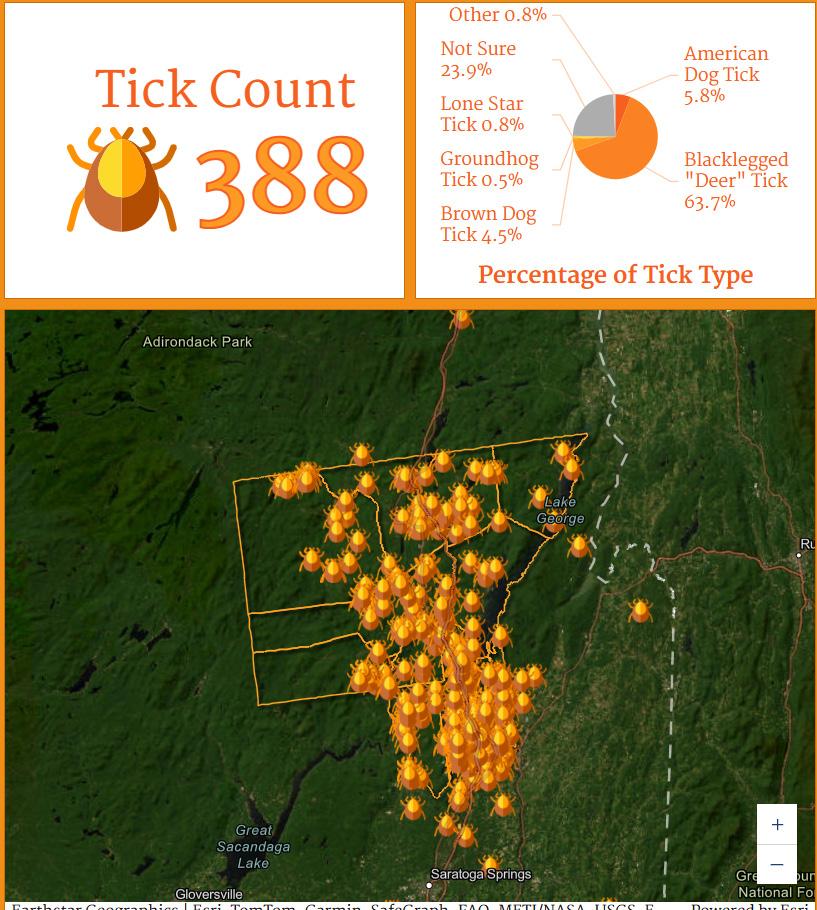
a Geographical Information System (GIS) website, allowing the public and the website’s creators to view reports on the site to determine hotspots, track types of ticks and view photos of ticks submitted by website users. The site also includes links to educational information about prevention and treatment of tick-borne diseases.
The new portal was the brainchild of Olivia Cohen, a Warren County Senior Public Health Educator who oversees tick illness reports for Warren County Public Health and was exploring ways to raise awareness to the issue.
Within the first two weeks of the website being publicized, it had garnered 240 reports thanks in part to Capital Region media attention.
“Every year our staff fields dozens of calls from residents about ticks, and we get reports more frequently of serious tick-borne illnesses like babesiosis and anaplasmosis that were not common in the past,” Warren County Health Services Director Ginelle Jones explained. “This new website asks our residents and visitors to be citizen scientists, to allow us to collect data so we can easily let people know if certain areas of Warren County have larger populations of ticks this year.”
The “Ticks in Warren County, NY” website, released to the public on April 17, 2025, was a collaboration between Warren County Public Health and Warren County Department of Planning and Community Development. The site allows those who are bitten, crawled on or otherwise accosted by ticks to report it through
Cohen and the Warren County Public Health team have also begun an annual series of tick educational events at trailheads and parks around Warren County, with three scheduled in May this year, during which they distribute tick removal kits and helpful information. They have also offered numerous tick safety presentations at local libraries and community organizations.
“Diseases that are spread through tick bites can be very serious, so promptly removing a tick that has latched on and treating any illness that may develop quickly are imperative. It is very important for our residents and visitors to know how to prevent tick bites and what to do if you are bitten,” Health Services Director Jones said.
The site can be found at https://tinyurl.com/WCtickreports.


Innovative Strategies for Resilient, Prepared Communities

IEM Specializes in:
•
• Mitigation & Resilience
Sign up to receive news updates to your inbox every weekday morning and occasional IEM-specific news and/or information by going to iem.com/newsletter-signup.

www.nrsforu.com
Improving the Quality and Safety of New York State Highways


CBy Amanda Caughey, Communications Specialist, NYS LTAP Center, Cornell Local Roads Program, and David Orr, PE, Director, NYS LTAP Center, Cornell Local Roads Program
ounties maintain almost one-fifth of the 115,000 miles of roads and streets and over two-fifths of the 16,000 bridges in New York State. Three-fifths of the funding for these $2 billion annual expenses is paid for with local revenues in the form of property, sales, and other taxes. Where does the highway department go when they have a technical question or need training on these critical assets that help all of the citizens in New York State travel every day?
You may already know, but for those who don’t, allow us to introduce ourselves. As the New York State LTAP Center, the Cornell Local Roads Program provides unbiased, timely, and exceptional technical assistance and training to highway and public works departments across New York State to help improve the quality and safety of roads and streets. We support local communities through strong collaborations with partners that enhance the sustainability of local highway assets.


We offer training across New York State via workshops, webinars, and conferences. The annual Highway School is done in partnership with the New York Association of Towns, this conference held every June brings over 700 highway officials to Ithaca for two and a half days of training and networking.
In the fall, the Conference on Local Bridges is held in partnership between us, the New York State County Highway Superintendents Association, the New York State Department of Transportation, and the engineering consulting community, bringing over 350 professionals focused on the bridges owned by counties, towns, and cities.
Our day-long workshops, covering topics from road maintenance, communication, management, legal, and highway safety, provide in-depth knowledge and a chance to connect with other highway professionals nearby. When your highway department needs to call on another municipality for help, chances are they will already have met their counterpart at one of our workshops or conferences! Workshops are typically offered in early spring (late March through May) and fall (late September through early October) to avoid their busiest seasons.
When workshops aren’t running, we offer one-hour foundational webinars — usually on Tuesdays from 9:00 to 10:00 AM. These sessions cover a full range of critical topics for highway officials, provide glimpses of our day long workshops, and often qualify for 1 Professional Development Hour (PDH) for engineers.
You can visit our website www. nysltap.org to see all the events that we offer. Our website is packed with resources designed to support you.

We produce Community Corners, ready-to-use materials that help inform the public about the hard work done by the highway department every day, often behind the scenes. Too often, people only notice the roads during a snowstorm when plows are already working tirelessly. Community Corners help tell their story and show how essential the highway department efforts are.
Another highlight is our Tailgate Talks — sheets designed to be used as part of a 5–10-minute safety briefings perfect for supervisors and foremen to start the workday right. Topics range from bee stings to diesel exhaust safety. We are adding new talks all the time.
Have a question about roadway safety and not sure who to ask? Contact us! If we don’t know the answer, we’ll find someone who does. You already do so much for your community; we are here to make your job just a little easier. Whether you’re looking for advice on roads and streets, have a legal question, or just want help to manage your budget we are here for you. You may just want a second opinion on an issue, that is where our two engineers on staff are ready to assist you, free of charge.
We sometime take the answers to your questions and turn them into resources on our website, our Quick Answer and Deeper Digs series. Questions answered range from how to determine the highway right-of-way to strategies for securing more funding, to the proper treatment to improve safety along the road. No question is too tough for our experts with over 50 years of combined experience on local roads issues: David Orr. P.E. and Geoffrey Scott, P.E!
At the end of the day, our goal is simple: to help you make sure everyone in your county gets home safely every single day on high quality roads and streets. We do this by providing the tools, knowledge, and support you need. Call, email, or check out our website. We are here to help.

Our municipal banking team works closely with the local branches to deliver customized solutions for municipalities of all shapes and sizes.
PRODUCTS & SERVICES:
• Collateralized Deposits
• Treasury Management Solutions
• Merchant & Credit Card Services
• Municipal Lending
• & More!
BANK ON PARTNERSHIP:

866-205-4416 CBMuni@cbna.com cbna.com/muni















The Nation’s Top Public Finance Law Firm
Orrick is bond counsel to numerous counties throughout New York State. We provide cost effective and prompt partner attention to all of our clients.
Douglas Goodfriend and Thomas Myers have over 60 years of combined experience in public finance matters, and have authored the “Bond Basics” series of primers for counties, towns, villages and cities, school districts, public libraries and fire districts in New York State.
To obtain free copies of any of these books, contact publicfinance@orrick.com.
Thomas E. Myers
212-506-5212
tmyers@orrick.com
Douglas E. Goodfriend
212-506-5211
dgoodfriend@orrick.com
NYSAC Thanks the Sponsors
& Exhibitors of the 59th Annual County Finance School
SPECIAL EVENT SPONSORS
Amazon Business
Arrow Bank
Capital Markets Advisors
ClearGov
Deckard Technologies
JPMorgan Chase Bank
Municipal Electric and Gas Alliance
NBT Bank
NYMIR
PERMA
PKF O'Connor Davies
three+one
THURSDAY DINNER SPONSORS
Absolute Auctions & Realty
Fiscal Advisors & Marketing, Inc.
KeyBank
M&T Bank
Orrick, Herrington & Sutcliffe, LLP
Roosevelt & Cross, Incorporated
GOLD SPONSORS
Bank of America, N.A.
Community Bank, N.A.
Drescher & Malecki LLP
Granicus
NYCLASS
ProAct, Inc.
SILVER SPONSORS
Expedia Group, Inc.
Lumsden & McCormick, LLP
OneGroup
Signal Risk Management
The Baker Group
Troy & Banks Inc.
Valley Bank
Venesky & Company
EXHIBITORS
AssuredPartners
Auctions International
CLA (CliftonLarsonAllen LLP)
ClearGov
Community Bank, N.A.
Deckard Technologies
Granicus
Municipal Electric and Gas Alliance
NBT Bank
New York State & Local Retirement System
NY MuniTrust
NYCLASS
NYMIR
NYSID
Office of the State Comptroller - Division of Local Government and School Accountability
PERMA
ProAct, Inc.
Systems East, Inc.
TD Bank, NA
TrueComp
U.S. BENCOR/MidAmerica
Unite Us
Warren County Tourism Department
Infrastructure Improvement
New York State’s Community Assistance Teams are Helping Local Governments Access Funding for Water Infrastructure

DBy Heather Cameron, Communications Manager, NYS Environmental Facilities Corporation
oes your community have water infrastructure that is outdated and in need of repair? Are you looking to expand water or sewer services, or create a district? The New York State Environmental Facilities Corporation (EFC) can help! EFC is New York State’s water infrastructure bank and has funded some of the largest capital infrastructure projects in the state. Our mission is to make projects affordable so communities can get shovels in the ground without taking on crippling debt.
EFC provides low-cost financing to local governments from the Clean Water and Drinking Water State Revolving Funds – a mix of federal and state dollars dedicated to financing community water infrastructure projects. State Revolving Fund interest rates are below market rate, and with long repayment periods, communities may save significantly on debt service compared to other available financing options. Eligible communities may be offered additional benefits including grants and interest-free financing. EFC also administers a variety of grant programs that help address New York State’s most pressing water infrastructure needs.
Need Help? We’re Here!
EFC’s dedicated Community Assistance Teams are standing by to help you with applications and answer questions to help your community access funding. Governor Kathy Hochul launched this outreach initiative in February 2023 to help ensure all communities can access funding for water infrastructure improvement. Since then, municipalities that have worked with the teams have been awarded $591 million in low-cost financing, and $63 million in grants!
“The Community Assistance Teams are a critical link for many communities who need help with their water or sewer infrastructure,” EFC President & CEO Maureen A. Coleman said. “The goal is that no community, regardless of size or
resources, will be left behind in New York's commitment to cleaner, safer water."
Capital projects can be daunting for even the most experienced local government officials. Not sure where to start? Want feedback about how to improve your funding application? Connect with the teams!
Go to EFC’s website at efc.ny.gov/cat to request a meeting for:
• Information about program benefits and eligibility
• Creative funding solutions tailored to your community
• Tips for completing applications
• Guidance on state and federal funding requirements
Many communities face water infrastructure challenges, including aging systems, workforce shortages, increasing costs, and declining rate bases. These challenges can be compounded in small, rural, and disadvantaged communities. The Community Assistance Teams serve an important role in helping to ensure that communities receive the help they need to jumpstart their projects and submit acceptable funding applications.
The teams are coordinated by EFC in partnership with the Departments of Environmental Conservation, Health, and State, and the Division of Homes and Community Renewal. Providing central access to the agencies that provide water funding helps communities access solutions that fit their unique needs.
EFC’s Current Funding Opportunities and Application Deadlines
Green Resiliency Grants: Funded by the Environmental Bond Act, this program prioritizes grants to flood prone communities for green stormwater infrastructure and resiliency projects. There is $60 million available this round.
Applications are due by August 15.
The application, application instructions, program summary, webinar registration, and other resources are available on our website at efc.ny.gov/grg .
State Revolving Funds: Provide low-cost financing for water or sewer projects.
Listing your project on the Intended Use Plan is the first step to financing your project! The project listing deadline for the upcoming fiscal year is May 30.
Use our online portal to provide contact information and project information, including a budget and schedule. More information is available at efc.ny.gov, where you can watch a webinar “All About Intended Use Plans!”
Green Resiliency Grants Applications due August 15 th
Learn More!
We host regular webinars and Q&A sessions. Details and registration links are available at efc.ny.gov/cat. Stay tuned for our new Lunch and Learn series. You can sign up for emails from EFC on our website to get news and notices right to your inbox!
We also provide links to past webinar recordings! Our “Water Infrastructure Funding” webinar in March and “All About Intended Use Plans” in April were huge hits. They drew over 290 participants representing 200 municipalities and organizations. Thank you to everyone who joined us!












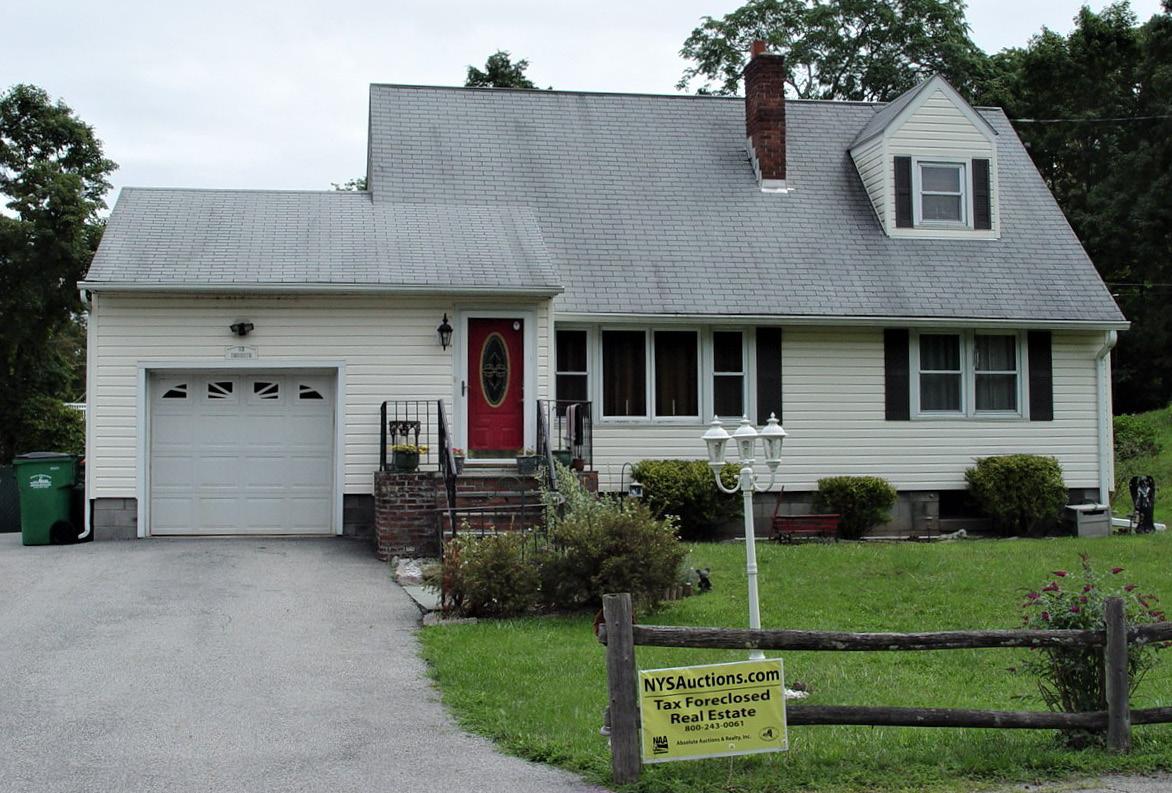
Beyond Shelter
The Story of Cortland County’s ‘Grace Space’

ABy Hallie Sebastian, Harm Reduction Educator, Rural Health Institute of New York
s temperatures dropped this winter, the Rural Health Institute of New York (RHI) opened the doors to the Grace Space, a daytime respite center located at the Grace & Holy Spirit Episcopal Church in Cortland County. Designed to serve individuals experiencing homelessness, the center operates under a harm reduction framework and addresses an urgent, growing need—especially as statewide data shows that homelessness in New York more than doubled between 2022 and 2024.
This alarming trend has been especially evident in smaller communities, where gaps in services often leave vulnerable populations without critical support. The Grace Space offers a powerful model for how local governments and community partners can collaborate to meet this crisis with compassion, practicality, and evidencebased strategies.
RHI raised over $130,000 from a mix of foundations, private donors, and local churches to bring the Grace Space to life. Since opening, the center has welcomed hundreds of guests— many of whom face overlapping challenges such as substance use disorder (SUD), mental illness, and disability.
2. Developing better data infrastructure around housing and homelessness, including a real-name database of individuals experiencing housing insecurity, and
3. Building community support and workforce capacity so that everyone is equipped to help.

But the Grace Space is more than a place to warm up. It provides bathrooms, showers, laundry facilities, secure storage, and daily hot meals. Just as critically, it serves as a vital point of connection between guests and local service providers. Through on-site harm reduction staff, guests can access referrals to healthcare, housing resources, and medication for opioid use disorder (MOUD).
The Grace Space is part of the Cortland County Housing and Homelessness Coalition’s broader effort to ensure that everyone in our community has access to a safe, clean, private, and consistent environment. This effort is guided by three concurrent goals:
1. Establishing a low-barrier daytime space where individuals can connect meaningfully with services,
We achieved our first goal with the successful operation of the Grace Space over the winter. Through the systems RHI built to support both the day center and our harm reduction staff, we also made significant progress on our second goal by establishing a real-name database that includes detailed information for 148 unique individuals seeking housing support. While we have not yet fully realized our third goal, we’ve begun coordinated efforts around housing workforce development.
The Grace Space was a pilot project, demonstrating the power of community collaboration to uplift our county’s most vulnerable populations. With continued support and partnership on the county level, day centers like the Grace Space could become lasting, transformative fixtures in our communities.
The impact of the Grace Space has already been substantial. Since opening, the center has contributed to a 63 percent reduction in police calls to the nearby public library and over 500 referrals to services. Eleven agencies have come together to bring services directly to guests, effectively eliminating many of the barriers they face when seeking care. A mobile medical unit visits the center twice a month, further strengthening the continuum of support.
By prioritizing holistic care, reducing barriers to treatment, and coordinating resources, we are improving long-term outcomes and helping individuals stabilize, recover, and thrive. With thoughtful planning and continued collaboration, we have the opportunity not just to expand services—but to transform lives.
Learn more about The Grace Space, the Cortland County Housing and Homelessness Coalition, at https://cchh.softr. app/gracespace

515 Broadway, Suite 402 Albany, NY 12207
